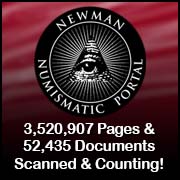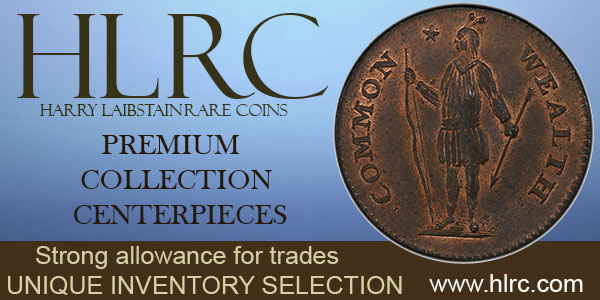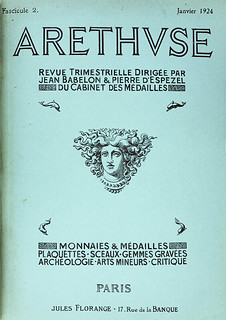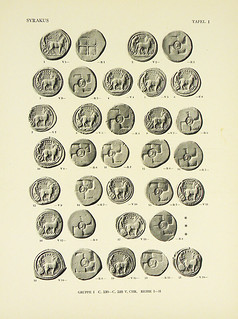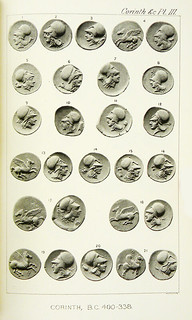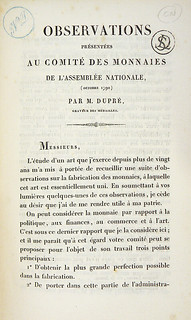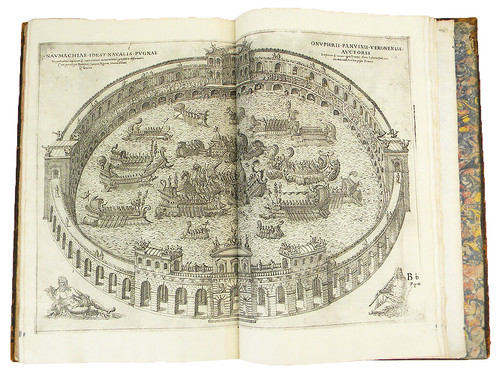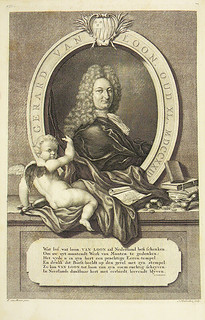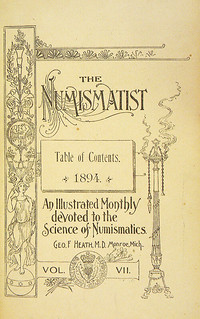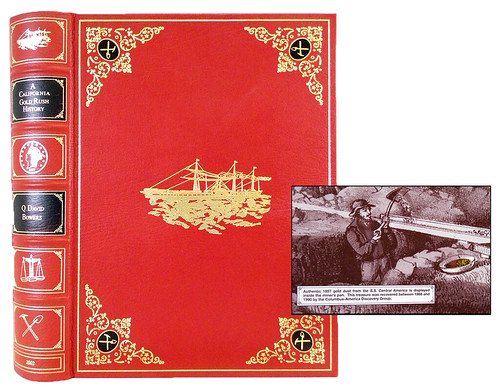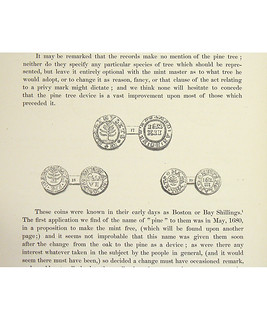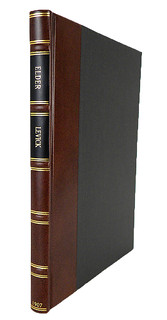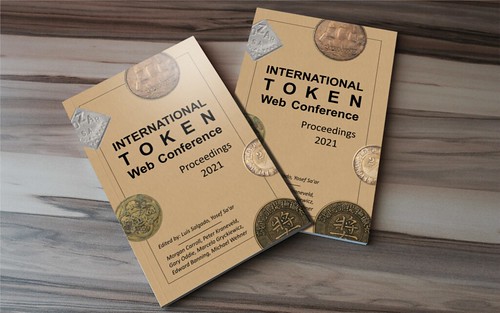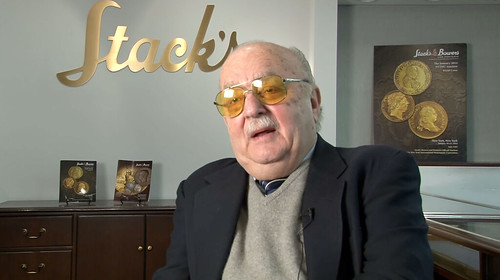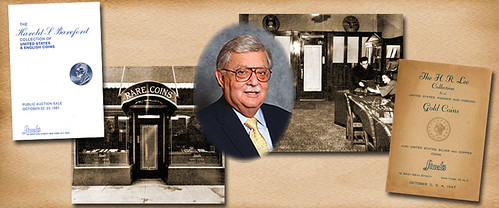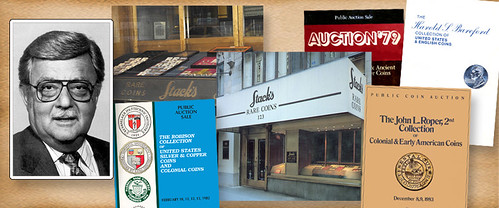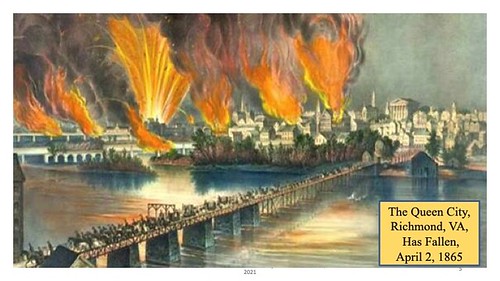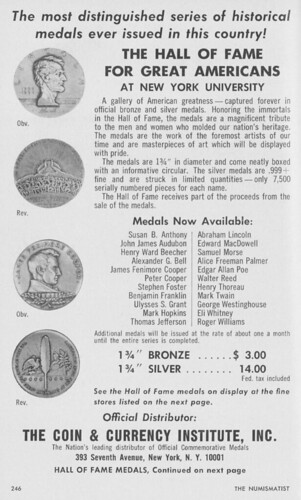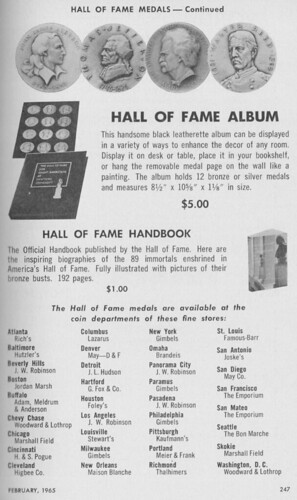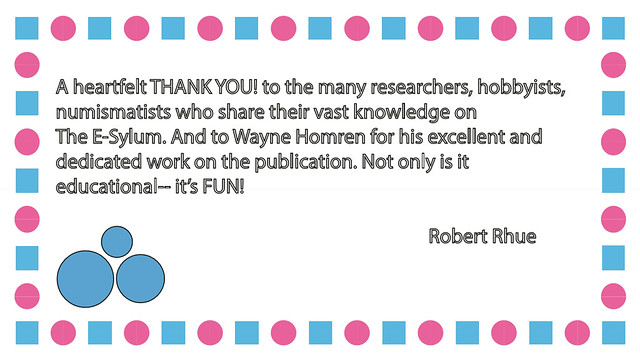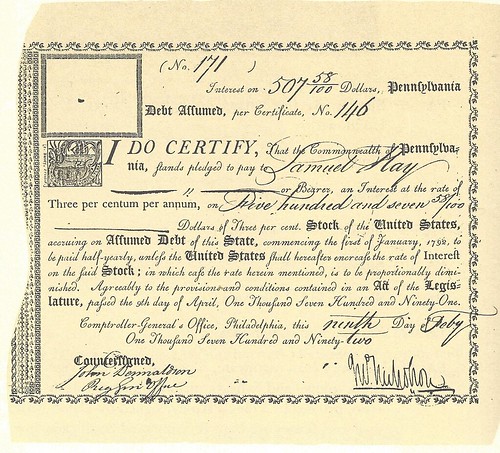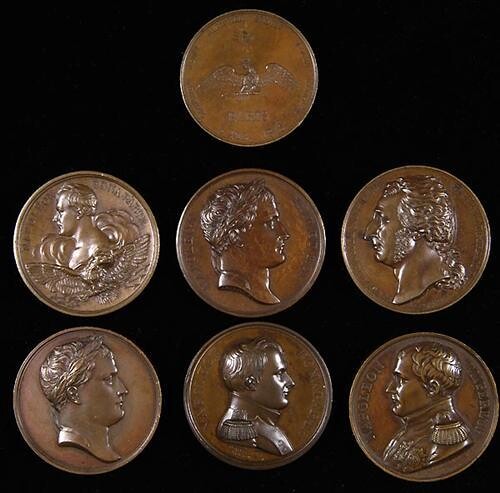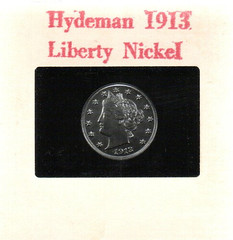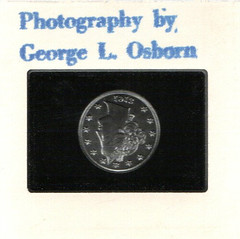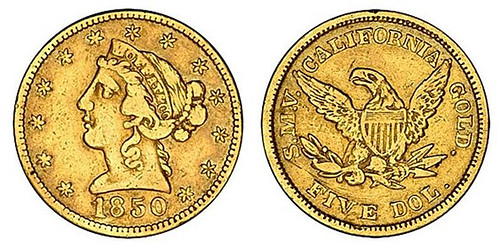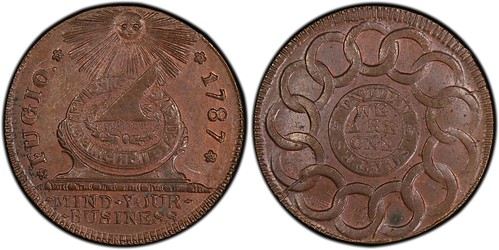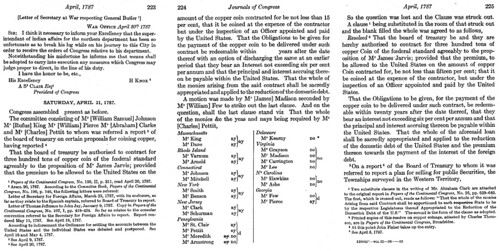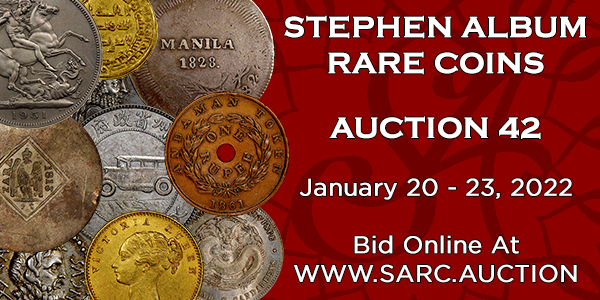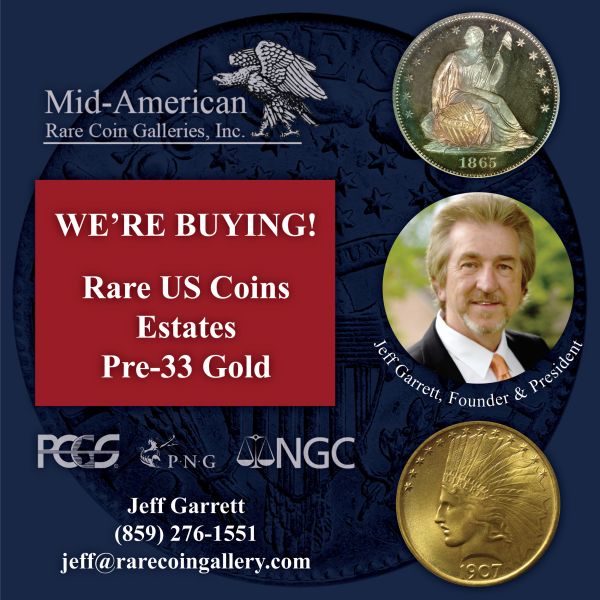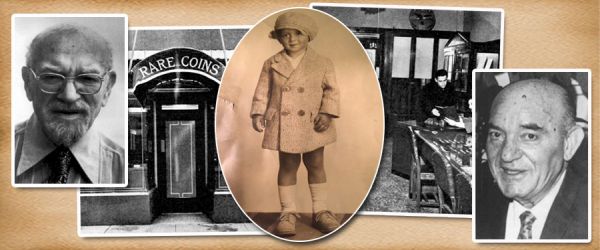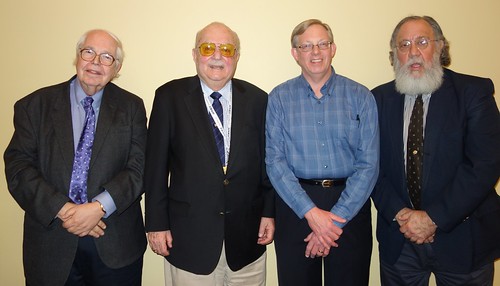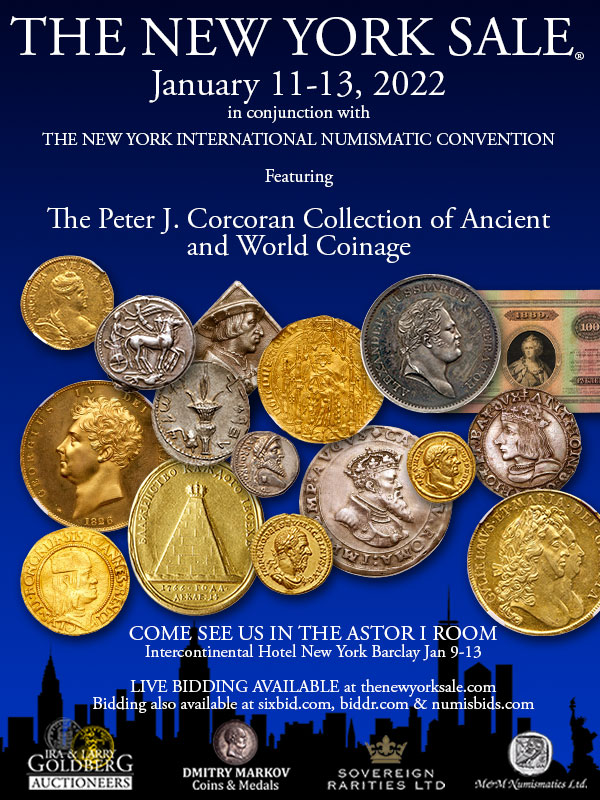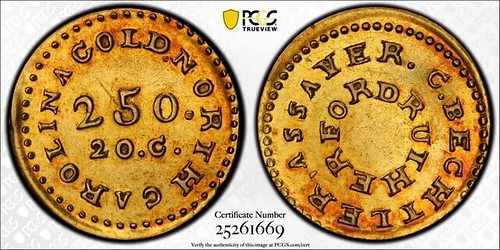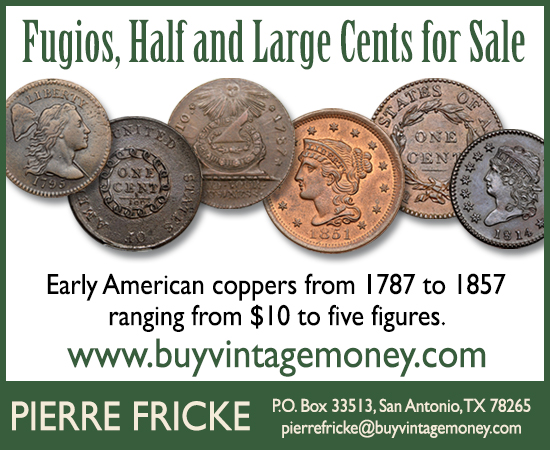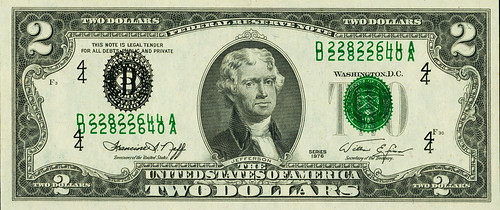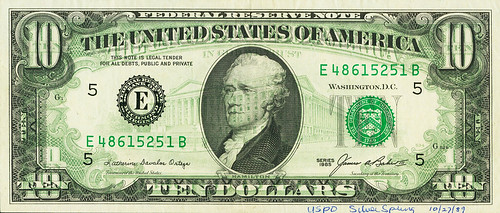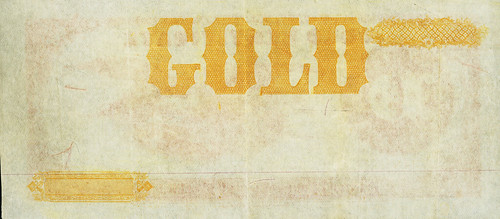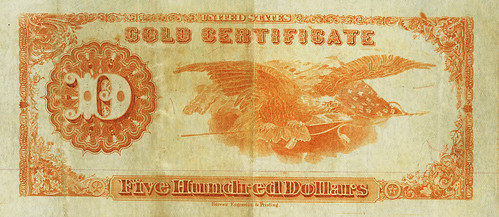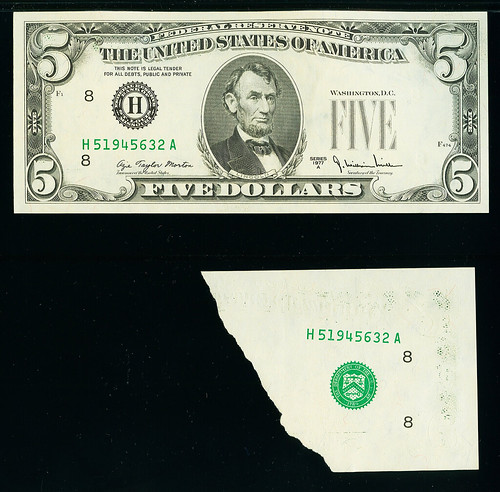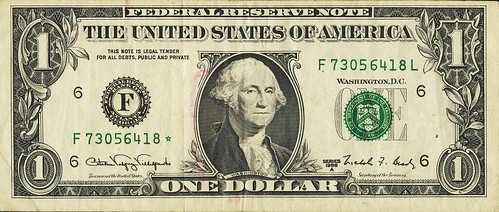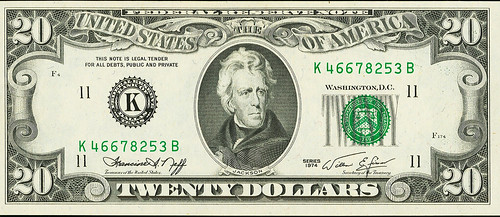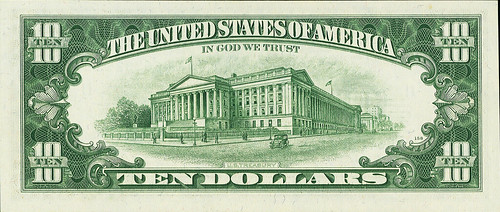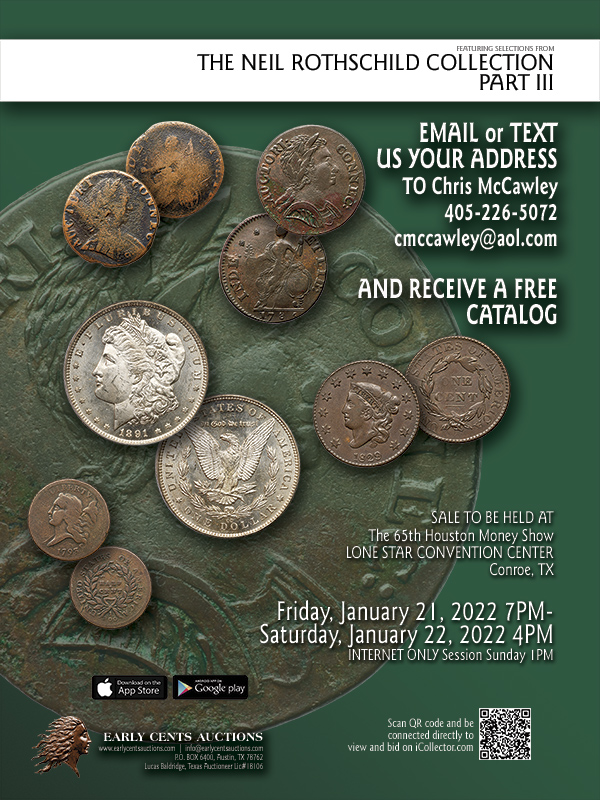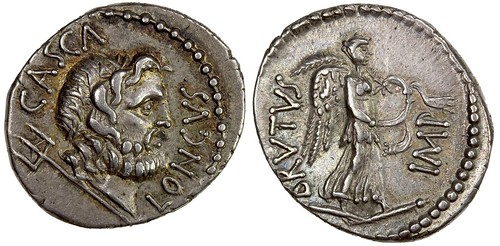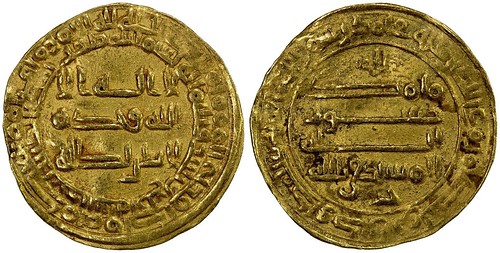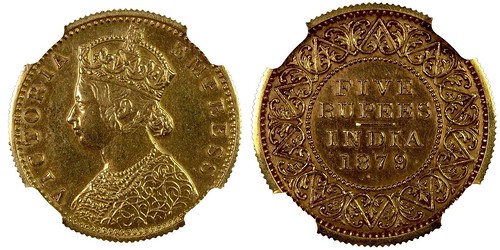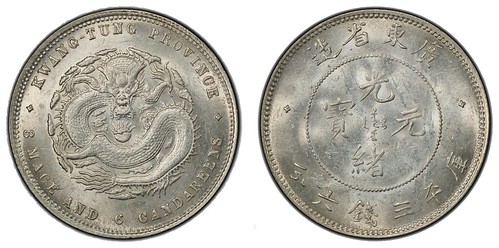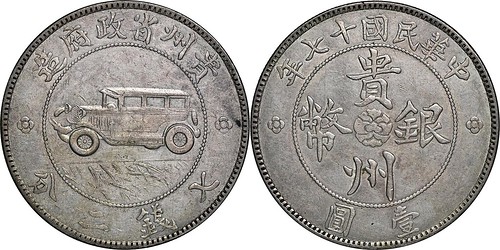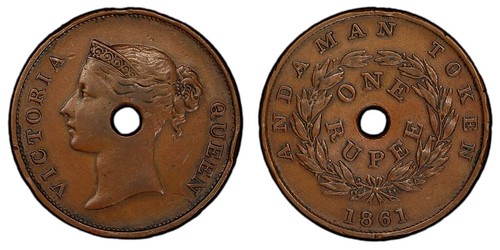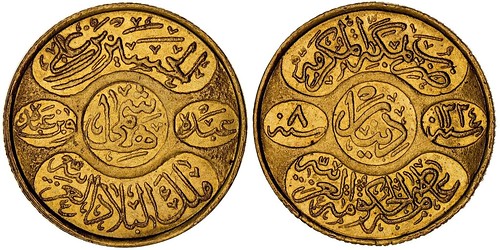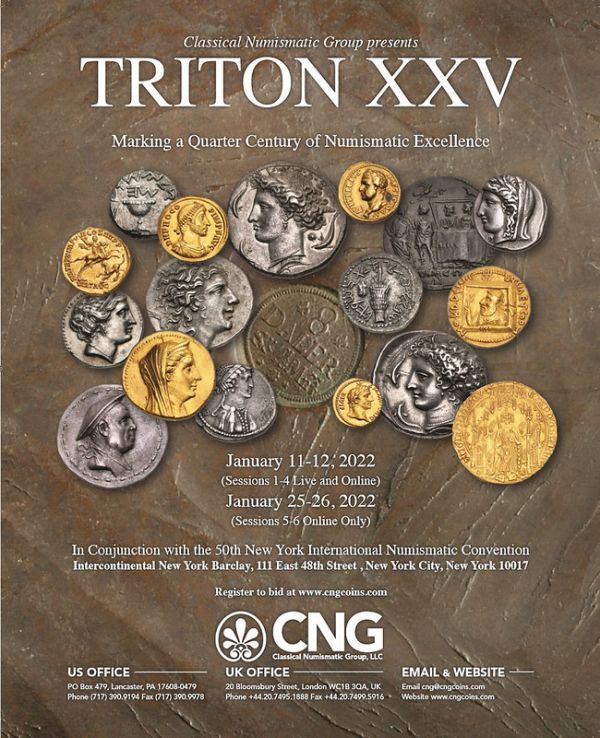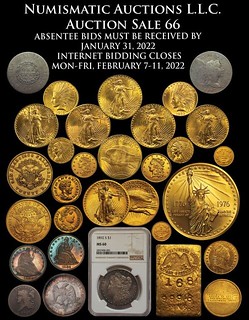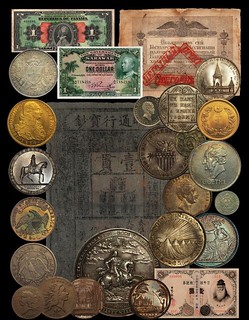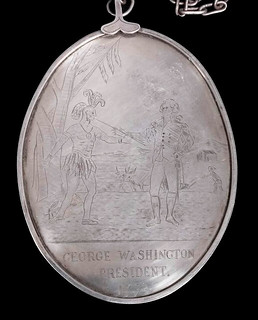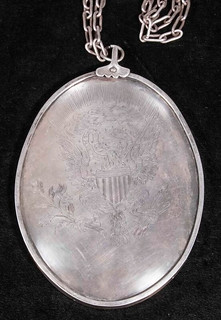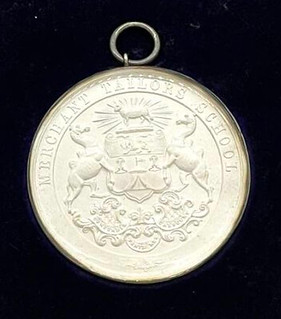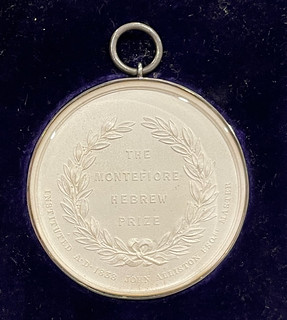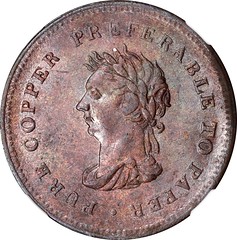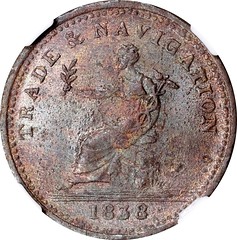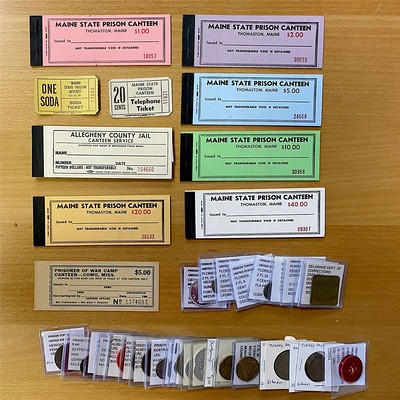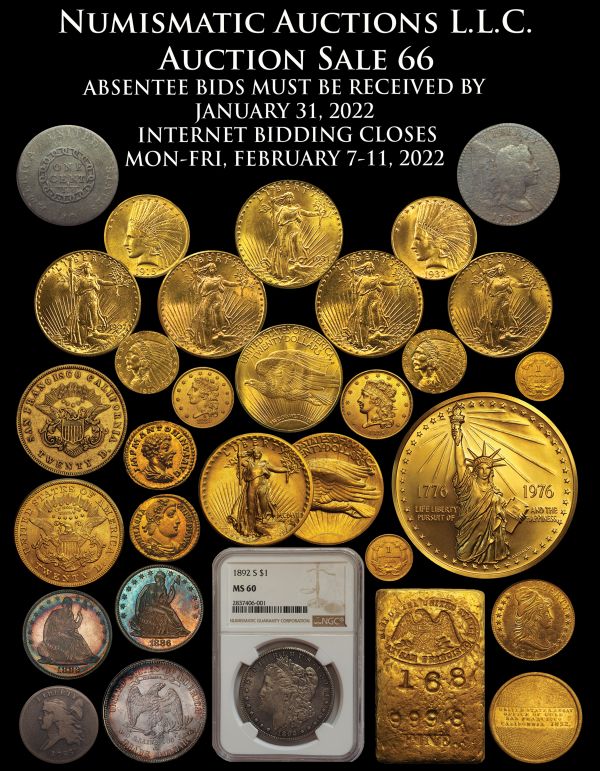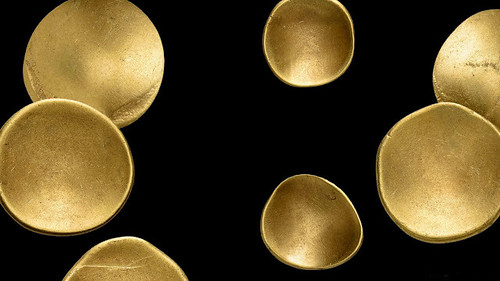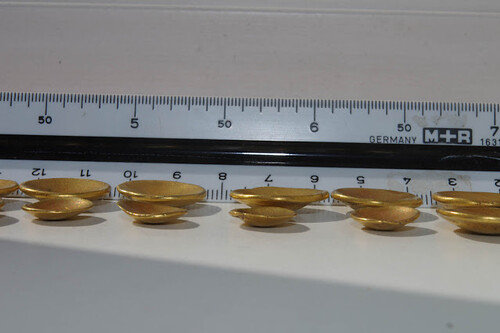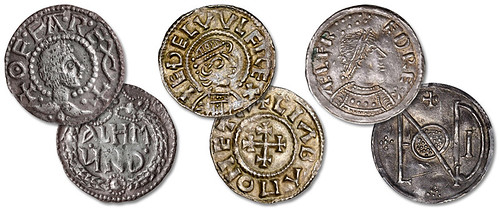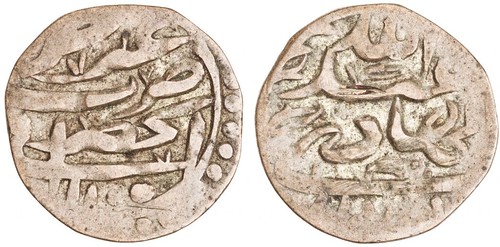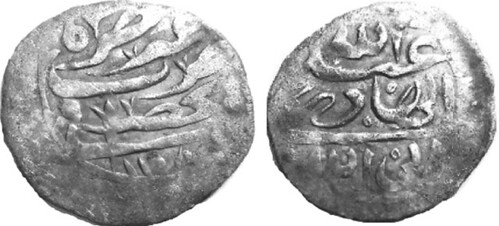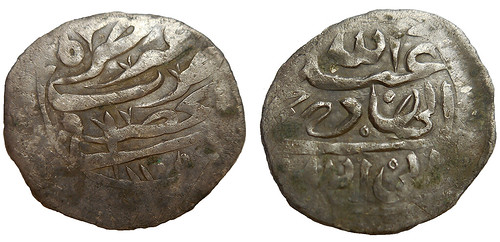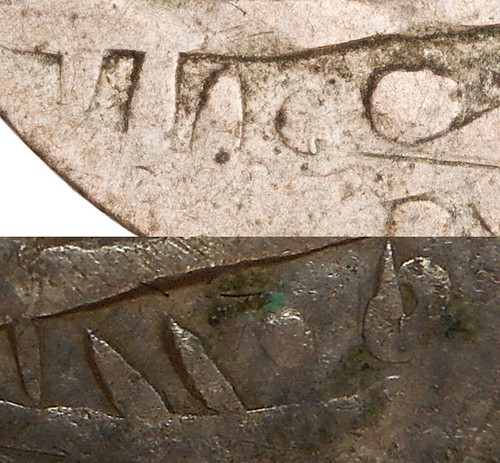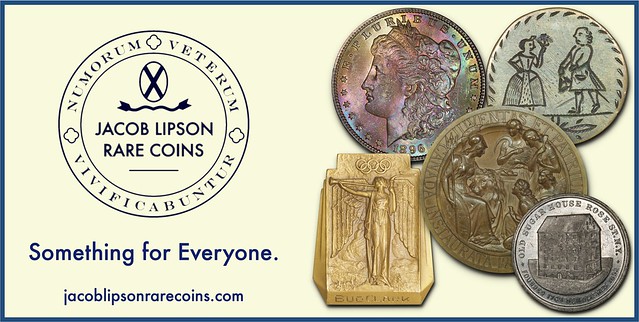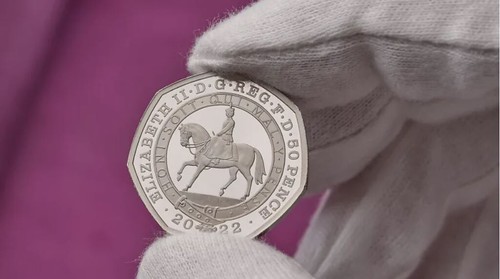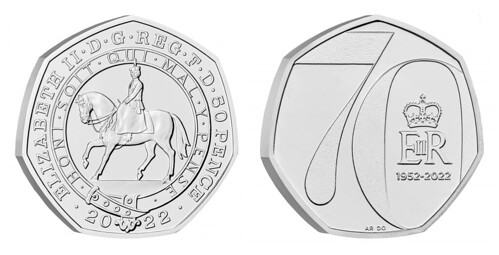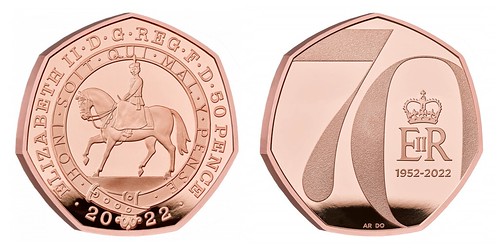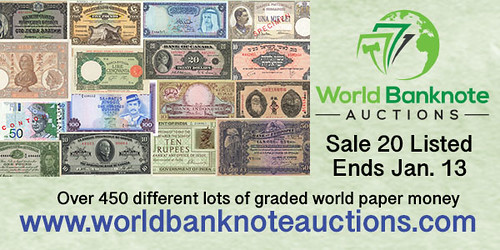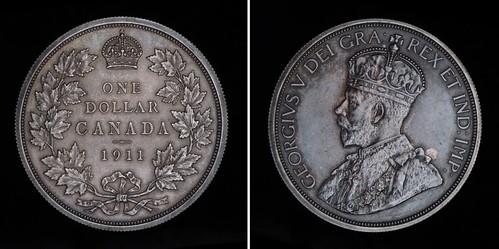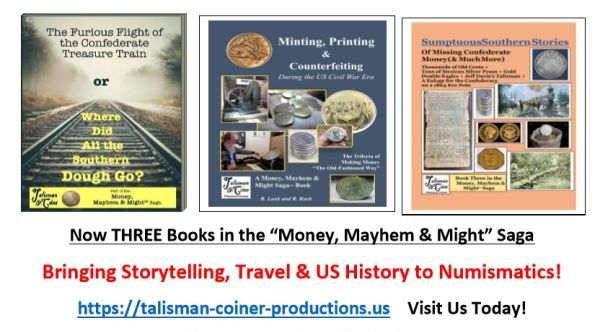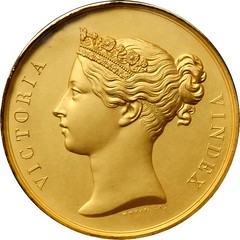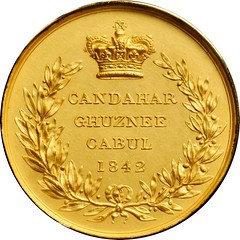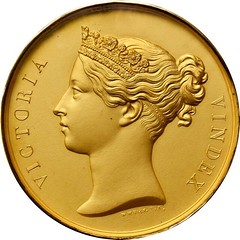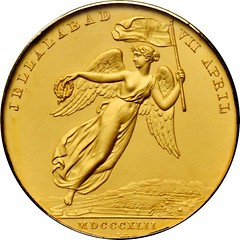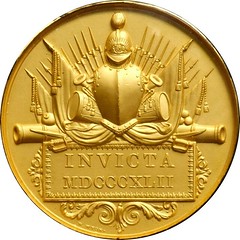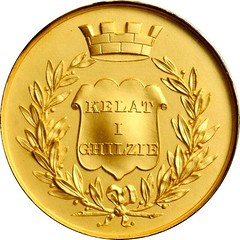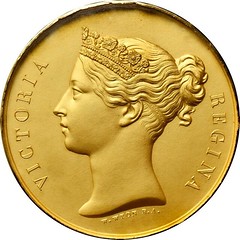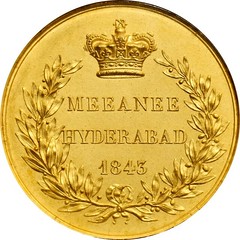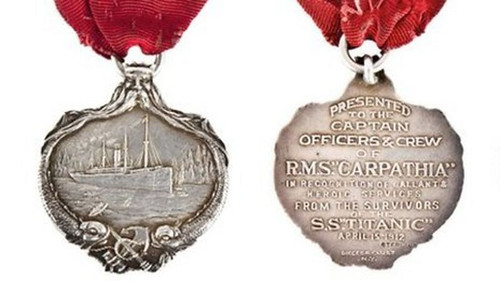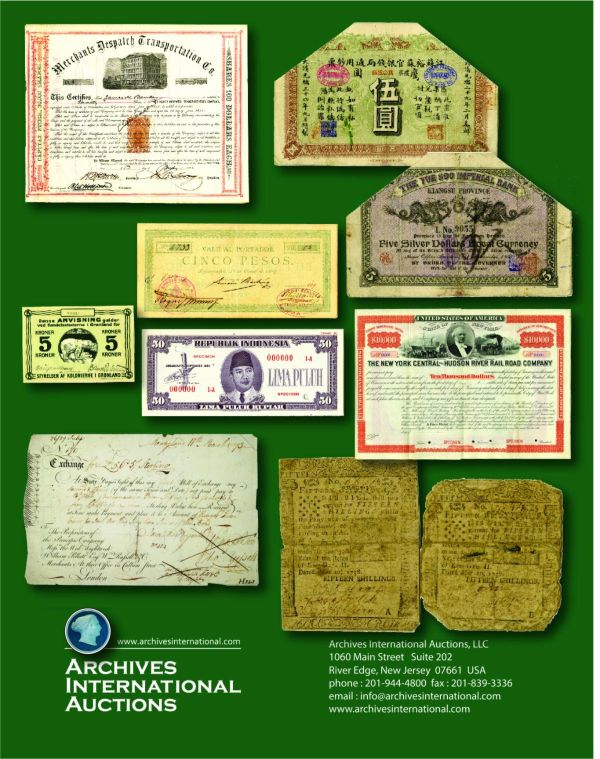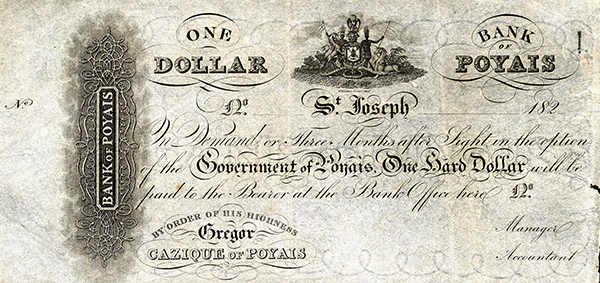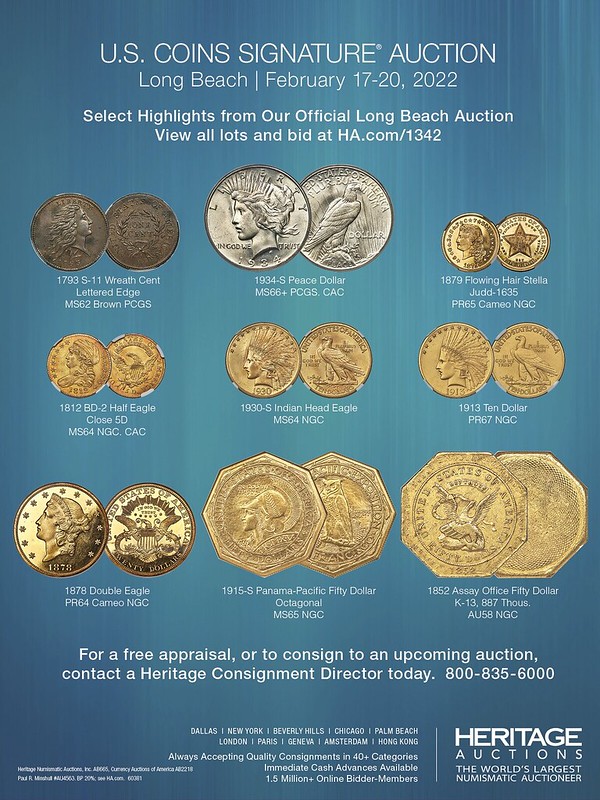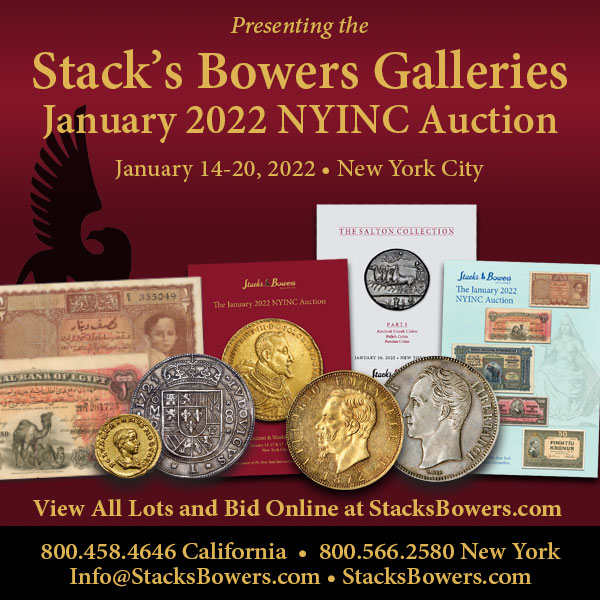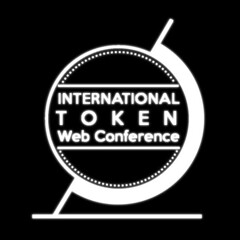
Visit our NBS Sponsors



About UsThe Numismatic Bibliomania Society is a non-profit association devoted to the study and enjoyment of numismatic literature. For more information please see our web site at coinbooks.org SubscriptionsThose wishing to become new E-Sylum subscribers (or wishing to Unsubscribe) can go to the following web page link MembershipThere is a membership application available on the web site Membership Application To join, print the application and return it with your check to the address printed on the application. Print/Digital membership is $40 to addresses in the U.S., and $60 elsewhere. A digital-only membership is available for $25. For those without web access, write to: Charles Heck, Treasurer AsylumFor Asylum mailing address changes and other membership questions, contact Chuck at this email address: treasurer@coinbooks.org SubmissionsTo submit items for publication in The E-Sylum, write to the Editor at this address: whomren@gmail.com BUY THE BOOK BEFORE THE COINSale CalendarWatch here for updates! |
- WAYNE'S WORDS: THE E-SYLUM JANUARY 9, 2022
- KOLBE & FANNING AUCTION SALE 162 ANNOUNCED
- NEW BOOK: INTERNATIONAL TOKEN CONFERENCE
- HARVEY G. STACK (1928-2022)
- ANS EARLY MEMBER CORRESPONDENCE DIGITIZED
- VIDEO: THE CONFEDERATE TREASURE TRAIN
- MORE ON ROBERT FRIEDBERG
- NOTES FROM E-SYLUM READERS: JANUARY 9, 2022
- WAR OF 1812 IN AMERICAN AND BRITISH MEDALS
- 2022 NATIONAL MONEY SHOW EXHIBITS
- PCGS RECLASSIFIES FUGIOS AS REGULAR U.S. ISSUES
- VOCABULARY TERM: HALLMARKS AND HALLMARKING
- HARVEY STACK AND STACK'S BOWERS GALLERIES
- RESEARCHING THE NEW YORK NUMISMATIC SOCIETY
- A BEVY OF BECHTLERS
- HERITAGE FUN CURRENCY AUCTION ERRORS
- STEPHEN ALBUM RARE COINS AUCTION 42
- NUMISMATIC AUCTIONS LLC SALE 66
- STACK'S BOWERS TO SELL SYD MARTIN COLLECTION
- NUMISMATIC NUGGETS: JANUARY 9, 2022
- CELTIC GOLD COINS DISCOVERED IN BRANDENBURG
- RUNZE COLLECTION HAMMERED ENGLISH PENNIES
- A CORRECTION TO
TREASURE (RHODE) ISLAND
- QUEEN'S PLATINUM JUBILEE COINS UNVEILED
- BANK OF CANADA MUSEUM ACQUIRES 1911 DOLLAR
- VERNON MEDAL INSPIRES HISTORIAN'S BOOK
- DUKE OF WELLINGTON AFGHANISTAN GOLD MEDALS
- CHARLESTON SLAVE BADGE TOP FIND OF 2021
- RMS CARPATHIA MEDAL
- POYAIS: GREGOR MACGREGOR'S FAKE COUNTRY
- PENNY PILE PRECIPITATES PROSECUTION
- LOOSE CHANGE: JANUARY 9, 2022
- FEATURED WEB SITE: INTERNATIONAL TOKEN WEB CONFERENCE
Click here to read the thin version on the web
Click here to subscribe
Click here to access the complete archive
To comment or submit articles, reply to whomren@gmail.com
Content presented in The E-Sylum is not necessarily researched or independently fact-checked, and views expressed do not necessarily represent those of the Numismatic Bibliomania Society.
WAYNE'S WORDS: THE E-SYLUM JANUARY 9, 2022
 New subscribers this week include:
Nigel Whiting, courtesy Jim Bulmer; and
Kevin Lipton, courtesy of Tony Terranova;
Welcome aboard! We now have 6,744 subscribers.
New subscribers this week include:
Nigel Whiting, courtesy Jim Bulmer; and
Kevin Lipton, courtesy of Tony Terranova;
Welcome aboard! We now have 6,744 subscribers.
Thank you for reading The E-Sylum. If you enjoy it, please send me the email addresses of friends you think may enjoy it as well and I'll send them a subscription. Contact me at whomren@gmail.com anytime regarding your subscription, or questions, comments or suggestions about our content.
This week we open with a new numismatic literature sale, one new book, and the loss of a hobby giant.
Other topics this week include the American Numismatic Society and New York Numismatic Society, Robert Friedberg, Syd Martin, Harvey Stack, War of 1812 medals, Fugio Cents, hallmarks, Bechtler gold coins, paper money errors, auction previews, hammered English pennies, the Canadian 1911 dollar, Admiral Vernon medals, and the International Token Web Conference.
To learn more about Augustin Dupré's rare 1790 Observations, the inaugural meeting of the ANS, the Confederate Treasure Train, the Hall of Fame For Great Americans, the Manley Washington medals, Fred Lincoln, and Andaman Islands penal colony, the Montefiore Hebrew Prize medal, Celtic gold rainbow cups, Her Majesty's Platinum Jubilee, Gregor MacGregor's fake country, and the Larkan Tokens of Umzimkulu, South Africa, read on. Have a great week, everyone!
Wayne Homren
Editor, The E-Sylum
KOLBE & FANNING AUCTION SALE 162 ANNOUNCED
Kolbe & Fanning have announced their upcoming numismatic literature sale. Great material in many subject areas. -Editor
January 22 Book Auction
Kolbe & Fanning Numismatic Booksellers are announcing our Sale 162, which will be held on Saturday, January 22, 2022. The 438-lot sale features material from more than two dozen consignors, and encompasses numismatic literature from around the world.
Some highlights of the sale include:
Lot 12: a complete set of the notable Paris journal Arethuse, published 1923–1931 by Jean Babelon and Pierre d'Espezel
Lot 25: an unbound copy of the first edition of Erick Boehringer's classic 1929 study Die Münzen von Syrakus
Lot 30: a complete first edition set of the British Museum catalogue of ancient Greek coins, in 29 volumes
Lot 190: Augustin Dupré's rare 1790 Observations présentées au Comité des monnaies de l'Assemblée Nationale, his proposed changes to the French Mint administration under the Revolution
Lot 108: Panvinio's rare 1600 work on the Roman circuses, lavishly illustrated, including depictions of coins from the collection of Jacopo de Strada
Lot 236: Gerard van Loon's 1723–1731 first edition of his classic work on Dutch medals, Beschryving der Nederlandsche historipenningen
Lot 307: a complete set of The Numismatist through 1945 (first six volumes in reprint), the key chronicle of American numismatics
Lot 321: Copy Number 1 of the sumptuous deluxe edition of Q. David Bowers's 2002 A California Gold Rush History, in a binding incorporating actual gold dust recovered from the S.S. Central America
Lot 339: an original 1875 first edition of Sylvester S. Crosby's The Early Coins of America, arguably the finest American numismatic publication of the 19th century
Lot 352: a finely bound copy of Thomas Elder's first photographically plated auction catalogue, his 1907 sale of the J.N.T. Levick collection and other properties.
Register early to bid online
Bids may be placed via post, email, fax or phone, as well as online. Kolbe & Fanning use Auction Mobility as our third-party online bidding platform. Auction Mobility is an app-based platform allowing users the ability to participate in the sale through phones, tablets and computers. To register for the sale, bidders must go to bid.numislit.com and sign up. Once you have set up an account, you may browse lots, place advance bids, or participate in the live sale online. Those wishing to participate on their devices can download the Kolbe & Fanning app through the Apple or Google Play Store.
The printed catalogue of Sale 162 was mailed to all active customers on our mailing list this week. As international mail speeds remain somewhat slowed by the Corona situation, we encourage our clients in other countries to consult the electronic catalogue in case their printed catalogue does not arrive promptly. A PDF of the printed catalogue has been posted to our main website at numislit.com for those who prefer that format. Bids placed via post, email, fax or phone must be received by January 21, the day before the sale, in order for them to be processed. Advance absentee bids may also be placed at any time online at bid.numislit.com. Live internet bidding will be available during the sale itself through the same platform. The sale will also be listed on Biddr and NumisBids in the near future.
Kolbe & Fanning Numismatic Booksellers LLC is a licensed and bonded auction firm in the State of Ohio. For more information, please see the Kolbe & Fanning website at numislit.com or email David Fanning at df@numislit.com. To register for the sale, go to bid.numislit.com. We look forward to your participation.
To bid and view lots, see:
https://bid.numislit.com/
To view the catalogue PDF, see:
https://www.numislit.com/images/upload/kolbefanningsale162.pdf
NEW BOOK: INTERNATIONAL TOKEN CONFERENCE
Yosef Sa'ar passed along information about the Proceedings for the 2021 edition of the International Token Web Conference. Thank you. -Editor
About the Book
Proceedings from the 2nd edition of the International Token Web Conference, including the following lectures:
-
The Larkan Tokens of Umzimkulu, South Africa
- Morgan Carroll; -
The Community Coinage of Griqualand
- Morgan Carroll; -
Swedish Amusement Tokens
- Peter Kraneveld; -
Farm Checks of the Fens
- Gary Oddie; -
Shearing Tokens and Cans
- Marcelo Gryckiewicz; -
Fraudulent 19th-Century Tokens From Montreal
- Edward Banning; -
San Francisco, California Gold Rush Era Tokens
- Michael Wehner; -
What Is A Token
- Peter Kraneveld et al.
Features & Details
Primary Category: Reference
Additional Categories History, Crafts & Hobbies
Project Option: 6×9 in, 15×23 cm
# of Pages: 132
Softcover: 9781006172243
Publish Date: Dec 02, 2021
Language English
For more information, or to order, see:
International Token Web Conference - Proceedings 2021
(https://www.blurb.com/b/10970708-international-token-web-conference-proceedings-20)
HARVEY G. STACK (1928-2022)
Stack's Bowers Galleries published this press release January 5, 2022 on the passing of Harvey G. Stack. -Editor
It is with great sadness we announce the passing of our friend and founder, Harvey G. Stack on January 3, 2022. His leadership over the years spearheaded our operations and his kindness and mentorship to staff, collectors, dealers, numismatic organizations and colleagues will never be forgotten.
Harvey was born in Manhattan on June 3, 1928, the son of Morton M. Stack and Muriel Stack. He grew up in Bronx and Jamaica, New York and attended NYU. His life revolved around his family and around numismatics, as generations of the Stack family built upon the rare coin business founded in 1933 by Harvey's father, Morton, and his uncle Joseph at 690 Sixth Avenue in Manhattan. Presenting their first public auction in 1935, Stack's quickly progressed to larger premises and a growing reputation. Although as a youngster Harvey worked after school and during vacations at the firm's Manhattan coin store, it wasn't until 1947 that he went to work full time for Stack's Rare Coins, a career that would last more than 70 years. As one of the second generation of family members to join the firm, Harvey worked alongside his father, uncle, and cousins Norman and Benjamin, supported by a staff of experts that comprised many of the most well-known professional numismatists of the 20th century.
In 1953 Stack's moved to a gallery at 123 West 57th Street, a location that would be home to the firm for more than
60 years and become a popular destination, known as the clubhouse
for collectors from all over the world. As a
family member, Harvey's responsibilities were wide ranging, assisting clients in the store, traveling to pick up
collections and attend conventions and coin shows, cataloging auction lots, auctioneering, and any other work that
needed to be done. He became an expert in many areas of numismatics and was able to translate his warm and jovial
personality into long-term relationships with the collectors and dealers he worked with over his career.
The decades following World War II were times of great growth for Stack's. Besides opening a new and improved
location, they were tapped to present at auction many important collections including Anderson-Dupont, Davis-Graves, Charles A. Cass (Empire
), R.L. Miles, Massachusetts Historical Society, Samuel Wolfson, and George
Walton, as well as conducting public auctions in conjunction with major numismatic shows including the American
Numismatic Association and the Metropolitan New York conventions. In the 1970s, Harvey's son Larry and
daughter Susan joined the firm, bringing in a third generation.
Harvey and the Stack family were instrumental in building some of the greatest collections of their time, including the cabinet of gold coins assembled by Josiah K. Lilly, chairman of the Eli Lilly & Co. pharmaceutical company. After Lilly's death in 1966, his collection of over 6,000 coins became part of the National Numismatic Collection at the Smithsonian, a process aided by Harvey and other members of the Stack family. Over the decades, Harvey and the Stack family also built a relationship with Louis E. Eliasberg, Sr., who accumulated the only complete collection of United States coins ever formed. In 1976, when the nation was celebrating its Bicentennial, Harvey and the firm helped facilitate the display of Eliasberg's incomparable collection at the United States Mint in Philadelphia.
Harvey Stack's role in numismatics was not purely business. He fought for clearer import regulations on coins from overseas and testified before a congressional subcommittee leading up to the Hobby Protection Act of 1973. He worked with the American Numismatic Association and other professionals in the effort to develop a standardized grading system for coins. In 1996 he appeared before the U.S. House Banking Committee to propose the 50 State Quarters Program, which brought countless new collectors into the hobby. Harvey Stack served on the board of the Professional Numismatists Guild for nearly a decade and acted as its president for two years beginning in 1989. In 1993 he received the PNG's Founder's Award, their highest honor, for his dedication to the hobby. Over the years, Harvey was a great supporter of the American Numismatic Association, the American Numismatic Society, and the Smithsonian Institution. He was a long-term member of the International Association of Professional Numismatists, as well as numerous other numismatic societies.
As the 20th century turned to the 21st , Harvey Stack and Stack's were still going strong, as Larry and Harvey brought to auction the incredible John J. Ford, Jr. Collection, and many other famous name cabinets. In addition, they partnered with Sotheby's in the record-breaking sale of the first 1933 Saint-Gaudens double eagle to cross the auction block. In 2011, Stack's merged with Bowers and Merena to create Stack's Bowers Galleries, one of the top numismatic auction firms in the country and a company that continues the Stack family's legacy of presenting important numismatic cabinets and realizing record-breaking prices. Harvey remained involved in the new business until the very end, telling the company's history, mentoring staff members, and maintaining his relationships within the hobby. Most recently he and Larry worked with the estate of long-time friends and clients Mark and Lottie Salton to bring their outstanding collection of world and ancient coins to market. It is unfortunate that Harvey will not be there to see the fruits of his labor as this remarkable cabinet crosses the auction block in 2022 and 2023.
Harvey was predeceased by his parents, his uncle Joseph, his cousins Norman and Ben. He is survived by his wife, Harriet, children Larry (Loretta) and Susan (Larry), grandchildren Rebecca (Jimmy) and Matthew (Tanya), and five great-grandchildren: Bryce, Avery, Dylan, Brielle and James.
Services will be private. In lieu of flowers, donations can be made to the Leukemia & Lymphoma Society, the American Numismatic Society or a charity of choice. The family can be contacted at Harveygs6328@gmail.com.
I'm so sorry to hear this news. Harvey was a treasure, and a longtime contributor to The E-Sylum. I received an email including a nice Happy New Year greeting from him on December 30th, and three more notes on New Year's Day.
He was an enthusiastic E-Sylum fan and I recall a long late evening phone conversation with him several years ago where he gushed about the quality of our content and was astounded that our circulation wasn't larger than Coin World, Numismatic News and the ANA rolls combined. And when I was starting a website to search numismatic content on the web (a project that led to my working to help create the Newman Numismatic Portal), Harvey was the first to step up with a donation to help cover the costs.
I looked forward to his biweekly articles on the history of his family firm. Hearing directly from hobby personalities who were there in the flesh as numismatic history unfolded is the best part of The E-Sylum. He will be greatly missed. -Editor
David Menchell writes:
"It's sad to lose such a giant in the numismatic fraternity, even at 92. He was still quite active and clearly loved the hobby. Whenever I would see him, he was always cordial and engaging. A real gentleman who worked to make the hobby better for both dealers and collectors. My condolences to Larry, Susan and the Stack family."
Tony Terranova writes:
"?Harvey was a big influence in numismatics. All positive. He, Norman, Larry and Susan are, and will always be, a huge part of my life. I'll miss him greatly!!
Anthony Terranova and family"
Dr. Ute Wartenberg Kagan of the American Numismatic Society writes:
"I will greatly miss Harvey. His old-school elegance and impeccable manners, combined with an astonishing knowledge and work ethics, made him stand out. More importantly though, Harvey and the Stack family have shown that coin collecting (and dealing) is largely about people and friendships that are often for life. This was certainly true for Harvey, who stayed in touch with many of his friends until his end. I was fortunate to have been one of them."
John Kraljevich writes:
"It will always be one of the greatest honors of my life to have been accorded the chance to work shoulder to shoulder with Harvey Stack. Chin to chin might be more appropriate — the man loved to talk, to regale, to relate, to share stories about the million and one people he met in the course of his lifetime in numismatics. He loved and knew coins, and was wowed by something neat as much as anyone, but relationships were the straw that really stirred his drink. He was a gentleman, a raconteur, and a family man besides being an institution. The folks who grieve Harvey's loss are many, and my heart goes out to Larry, Susan, Harriet, and all who loved him."
David Palmer writes:
"As with many of us, I knew and liked Harvey. The first time I met him was at a Stack's auction lot viewing. I said "Hello, Mr. Stack" and he held out his hand and said "Call me Harvey" I thought that would be the end of it, as we shook hands. He asked what I collected, and we spoke for a few minutes about Sheldon variety Large Cents, and Colonials. When a chair opened up for me (I am still convinced he helped that to happen), he said "Don't let me hold you up." Ever after, he remembered my name, and was always a gentleman. Certainly not everyone in this hobby/business is like that. I will always remember him fondly."
David Lisot writes:
"Harvey Stack was a true gentleman of numismatics. I remember Harvey when he was on 57th St in New York in the 1980's. Although I was just a young man in my 20's the venerable Mr. Stack would always come out to greet me. We became friends over the years and I had the opportunity to interview and videotape him several times. You can see a plethora of videos featuring Harvey on the Newman Numismatic Portal. Harvey was one of the "old school" coin dealers. He grudgingly accepted numerical grading and coins trading on computer. Harvey worked tirelessly to promote numismatics. He will be missed.
Here is a CoinWeek video on YouTube where Harvey talks about the essence of being a coin collector."
To watch the video, see:
Harvey Stack: Essence of Being a Coin Collector. S15-15 VIDEO: 1:58.
(https://www.youtube.com/watch?v=tdiSDw6jn74)
Kevin Lipton writes:
"The passing of Harvey has led me to a great deal of reflecting. I remember it like yesterday when my grandpa took me into the store on West 57th for the first time when I was just 12 years old. I was in awe of walking into the "holy shrine" of the coin business! Imagine my shock when Harvey noticed me drooling over the showcases and came over to introduce himself to me! This started what became a 50 year (OMG) relationship with this amazing man. There are no words I can express to explain what a profound influence he had on me throughout my career in the coin business. From his encouragement as a teenager to his tolerating my "frisky years" between 1979-1981, Harvey was always a mentor and a friend. Somehow I am now a grown man turning 63 in a couple of months after what seems like a flash in time. Harvey was always there for me with some great advice and a kind word.
"I know the Stack family will be in peace knowing Harvey passed so gently at the end."
Alan V Weinberg writes:
"I knew Harvey since 1958 when I first entered his store. He was a real people person
and often liked to just chat and tell stories. Nearly a decade ago, realizing that Harvey was aging and might possibly take his knowledge and stories with him, I urged him to start writing his memoirs and that started his many interesting tales in print. At times I urged him to comment about negative experiences with certain deceased collectors and dealers, which would amuse the hobby but he refused, not wanting to comment negatively about those who passed on.
"Even until this New Years Day Harvey was sending greetings to his many friends and sharing humorous emails. He was extraordinarily sharp til his very last day, which is a remarkable accomplishment in itself. I have no doubt that his love for and involvement in this hobby of numismatics was a major factor in his living a long life."
Jeff Rock writes:
"I was so sorry to hear about Harvey's passing. I thought for sure he would sail well past 100 years old, and I suspect most people would have had a hard time believing he was in his 90's, as he always seemed in good health and spirits, and definitely active. Harvey was a class act all around, really the old school type of dealer that dressed and acted like you would have expected in the 1950's - yet he never seemed old or fuddy-duddy.
"As any E-Sylum reader can attest his mind was working just as well, and I know many readers looked forward to his contributions as he detailed the coin scene and the Stack's dealings over the decades - especially when it got into the decades that we were there for. Our hobby has certainly lost some giants in recent years, and though the Old Guard may be shrinking at an alarming rate they have left behind a wealth of memories - and in Harvey's case some memories that will be read for decades to come so people can get an idea of what the hobby was like in a given year. His memories of dealing with collectors like Eliasberg and Lilly were riveting, and he may well have been the last person around who had this kind of first-hand knowledge"
David Gladfelter writes:
"Harvey was gregarious and approachable, willing to share stories with anyone regardless of experience or background. He was fair in his dealings – honest as the day is long. He was also a generous person as revealed by the press release. I hope that the firm will gather together his Numismatic Family
stories and publish them as a series, virtually or on paper."
Mike Hodder writes:
"My family and I owe a deep debt of gratitude to Harvey Stack and his family. I worked for Stack's in the 90's. Harvey was my boss but as the years went by he became a sort of uncle to me. He could be a tough man of business but was loyal to his staff. He loved the coin business and most of all the excitement around auctions.
"In the weeks before an auction sale, when the catalogue was in bidders' hands, Harvey would entertain important clients in the back office. The night of the sale he'd take auction staff out to dinner at Patsy's where we'd all chow down on Italian food on the house. At sale time Harvey liked to call the first couple of hundred lots, his style of auctioning being classic and old fashioned: he'd announce the lot number, say something about the rarity or desirability of the piece, then ask for an opening bid with the words "Your pleasure please?"
"He trusted his staff to do the jobs they'd been hired for, even if he wasn't entirely sure they knew what they were doing. I remember when I got and catalogued the Perkins Collection of Connecticut Coppers, a highly important variety collection bigger than almost every other in private hands. Harvey wasn't sure giving a full catalogue page description and an enlarged photo to a coin that looked like someone had driven over it with a tractor and then punched a hole through it but when it sold for five figures he gave me a smile because he knew the rest of the sale would do OK.
"Towards the end of my time at Stack's Harvey allowed me to sit at the partner's desk where Norman had sat. I felt honored. Harvey was what he'd have called a mensch, a real person, one worthy of respect. The coin business has lost one of its greats and is diminished for it."
Ken Bressett writes:
"My most sincere thoughts and condolences go out to the Stack family at this time of sorrow. Harvey was a true colleague and friend to many, and one that I valued for more years than I can remember. We both joined the ANA as Junior Members in 1947, corresponded frequently, and were both looking forward to 2022 and celebrating our 75th anniversary of numismatic activities.
"Over the years he worked unstintingly for the betterment of the hobby, including the construction and publication of consolidated grading standards, and implementation of the 50 State Quarters program. Our personal working relationship stood the test of time despite distinctly different personalities, and frequent differences of opinion. Arguing with Harvey became an enjoyable ritual, likely shared with many. He was unique in many ways and always a central figure in current events pertaining to numismatics.
"I will forever treasure the holiday greeting I received from him just two weeks before his passing. It very succinctly described our special kinship.
---Ken Bressett
HAPPY HOLIDAYS OLD TIMER.
AS AN ANA MEMBER AS LONG AS YOU, AND WANTING TO GET TO THE NEXT BIG ANNIVERSARY
TOGETHER, AND THEN MANY MANY MORE. CONGRATULATIONS ON ALL THE GREAT WORK YOU DO TO KEEP NUMISMATICS "WELL AND GROWING", AND BEING A CLOSE FRIEND FOR SO MANY DECADES.
WISHING YOU CONTINUED "HEALTH, HAPPINESS AND THE TIME TO ENJOY IT"
HAPPY HOLIDAYS,
HARVEY"
Harvey was definitely an "ALL CAPS" guy in email. One of the last of a kind.
See Pete Smith's article elsewhere in this issue for more on Harvey and the Stack's Bowers Galleries firm. -Editor
To read a CoinWeek piece by Charles Morgan, see:
Remembering Numismatic Icon Harvey Stack, Co-Founder of Stack's Bowers
(https://coinweek.com/people-in-the-news/in-memoriam/remembering-numismatic-icon-harvey-stack-co-founder-of-stacks-bowers/)
ANS EARLY MEMBER CORRESPONDENCE DIGITIZED
The latest addition to the Newman Numismatic Portal is a group of early ANS member correspondence. Project Coordinator Len Augsburger provided the following report. -Editor
American Numismatic Society Early Member Correspondence Digitized
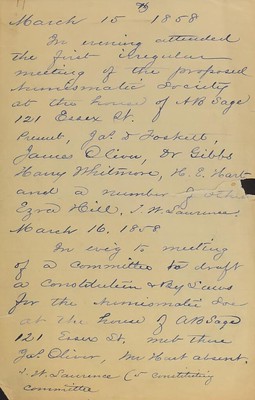 Early member correspondence of the American Numismatic Society, covering the years 1858-1899, has recently been digitized under sponsorship of Newman Numismatic Portal. In the 1858 file we see notes related to the inaugural meeting of the ANS that occurred on March 15, 1858, at the home of Augustus B. Sage, 121 Essex Place in New York City. Attending were James D. Foskett, James Oliver, Dr. Gibbs, Harry Whitmore, H. E. Hart,
Early member correspondence of the American Numismatic Society, covering the years 1858-1899, has recently been digitized under sponsorship of Newman Numismatic Portal. In the 1858 file we see notes related to the inaugural meeting of the ANS that occurred on March 15, 1858, at the home of Augustus B. Sage, 121 Essex Place in New York City. Attending were James D. Foskett, James Oliver, Dr. Gibbs, Harry Whitmore, H. E. Hart, and a number of others,
including Ezra Hill and J. W. Laurence. The tone of the first meeting must have been enthusiastic, for the next evening a smaller group met again, to begin drafting a constitution and bylaws.
Image: Notes related to the inaugural ANS meetings, March 15-16, 1858
Link to ANS early member correspondence on Newman Portal:
https://nnp.wustl.edu/library/archivedetail/515008
VIDEO: THE CONFEDERATE TREASURE TRAIN
These are selections from the David Lisot Video Library that feature news and personalities from the world of coin collecting. David has been attending coin conventions since 1972 and began videotaping in 1985. The Newman Numismatic Portal now lists all David's videos on their website at:
https://nnp.wustl.edu/library/multimediadetail/522852
Here's one on the Confederate Treasure Train. -Editor
Furious Flight of the Confederate Treasure Train, Where Did All the Southern Dough Go?
Presenters: Rick Lank & Rebecca Rush, Talisman & Coiner Productions,
Video Production, David Lisot, CoinTelevision.com.
When it was clear the South was going to lose the Civil War the Confederate Treasury and the Richmond Banks dispatched trains with the remaining money of the South thru Danville, Charlotte, Abbeville, Augusta and more. Learn about this frantic flight and the gold, silver, paper money and bonds that were spirited away and what happened to all that Southern Dough! Told by authors and storytellers Rick Lank and Rebecca Rush.
An excerpt of the video is available for viewing on the Coin Television YouTube Channel at:
https://www.youtube.com/watch?v=pAEcRlsTZaQ
David adds:
"Rick Lank & Rebecca Rush are a team of dedicated researchers and story tellers that tell the tale of the final moments of the fallen South. We videotaped them at the recent Pennsylvania Association of Numismatics Convention in Pittsburgh on October 2021. PAN is a great group of people dedicated to the coin hobby and furthering numismatic education. Tom Uram and Patrick McBride are to thanked for all their help."
MORE ON ROBERT FRIEDBERG
Regarding the medal mentioned in Pete Smith's bio of his father Robert Friedberg, Arthur Friedberg writes:
"I know of none engraved. I still have about a dozen of them, all blank. From the story I remember at that young age, Menconi came to them offering to do a medal (quite certainly not for free, but I have no idea of the terms).
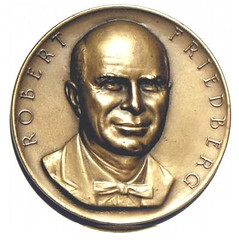 "That was a very nicely done piece with just a couple of minor inaccuracies not even worth bothering with. One major one was "in 1947 he was hired by Jacques Minkus to manage the coin department at Gimbels."
"That was a very nicely done piece with just a couple of minor inaccuracies not even worth bothering with. One major one was "in 1947 he was hired by Jacques Minkus to manage the coin department at Gimbels."
"He was not "hired." It was a business agreement. The department had been run by a partnership of Hans Schulman, Abe Kosoff, and Abner Kreisberg. It should come as no surprise to anyone that that did not work out. My father took it over and the deal was that rent was a flat 20% of sales, payable after the close of the month after Minkus got his remittance from the individual stores. Minkus was paying, we found out, about 10%. By the end of the 70's both the coin business and department store hours and return policies had changed enough that this was no longer tenable, and that is why we got out of the department stores."
Thanks for the background! Dave Lange agrees that the medals were left blank. -Editor
Dave writes:
"I want to make one minor correction to Pete Smith's article about Robert Friedberg. Pete suggested that the Coin & Currency Institute engraved the back of this medal to personalize it for the recipients. The medal indeed was left blank on its back, but that was done in the event that the recipients wanted to have it engraved themselves. The example in my collection is not engraved, and I gather that Pete's specimen is likewise blank.
"Issuing a medal to honor Robert Friedberg's life and work was only appropriate, as he had done so much to popularize medal collecting. The C&CI sponsored numerous medal issues in the late 1950s and throughout the 1960s. These typically covered popular topics that had broad appeal and would sell well, such as the statehoods of Alaska and Hawaii and the centennial of America's Civil War. Perhaps, the most notable line of C&CI-backed medals was the series of honorees in The Hall of Fame For Great Americans. The company even produced a rare album to house these. I'm attaching a double-page ad from the February 1965 issue of The Numismatist that features both the medals and the album."
To read the earlier E-Sylum article, see:
ROBERT FRIEDBERG (1912-1963)
(https://www.coinbooks.org/v25/esylum_v25n01a16.html)
NOTES FROM E-SYLUM READERS: JANUARY 9, 2022
Wegefarth's Gold and Silver Dollar Saloon
Dave Schenkman writes:
"I found the article on the Gold Dollar Saloon in Buffalo, NY interesting. On page 106 of my hard rubber token catalog is a token from the Silver Dollar Saloon, with Wegefarth's name on the reverse. Wegefarth also issued brass tokens, which are listed in Wright.
"I took a quick look at the 2015 article. The authors commented that the Gold Dollar Saloon and the Silver Dollar Saloon were competitors, but later in the article he say that Gus Wegefarth owned the Gold Dollar; Wegefarth obviously owned the Silver Dollar also, since his name is on the hard rubber token."
Thanks. Too bad we'll probably never know the fate of the displayed coins. -Editor
To read the earlier E-Sylum article, see:
GOLD DOLLAR SALOON OPEN ON NEW YEAR'S DAY
(https://www.coinbooks.org/v25/esylum_v25n01a08.html)
More on Engraver Lorenzo Hatch
Researcher and author Mark Tomasko writes:
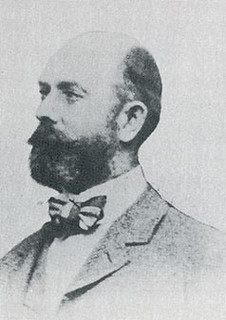 "The piece on Lorenzo Hatch in last week's E-Sylum stated that the two portraits on the back of the $2 Educational note were engraved by Lorenzo Hatch. That is not the case. The portrait of Fulton was engraved by Charles Burt, and the portrait of Morse was engraved by Charles Schlecht. That information comes from the Bureau of Engraving and Printing. Gene Hessler also had the Burt and Schlecht attributions in his Comprehensive Catalog which I believe is still being published. The portraits of Grant and Sheridan on the back of the $5 Educational note were engraved by Hatch. Unfortunately Wikipedia carries the incorrect information about the portraits on the $2 note, and I suspect other sources have picked up that same information.
"The piece on Lorenzo Hatch in last week's E-Sylum stated that the two portraits on the back of the $2 Educational note were engraved by Lorenzo Hatch. That is not the case. The portrait of Fulton was engraved by Charles Burt, and the portrait of Morse was engraved by Charles Schlecht. That information comes from the Bureau of Engraving and Printing. Gene Hessler also had the Burt and Schlecht attributions in his Comprehensive Catalog which I believe is still being published. The portraits of Grant and Sheridan on the back of the $5 Educational note were engraved by Hatch. Unfortunately Wikipedia carries the incorrect information about the portraits on the $2 note, and I suspect other sources have picked up that same information.
"Lorenzo Hatch is a particular research interest of mine. I wrote an article for the American Numismatic Society ANS Magazine, 2012 issue 4, entitled "Artistic Perfection is Security: The U.S. Work of Lorenzo J. Hatch," which lists the Hatch BEP portraits that were used on U.S. currency: Garfield, Manning, Sheridan, and Grant. He did many other portraits for the BEP but those were the only ones used on U.S. paper money. While Hatch's work at the Bureau was excellent, it was mostly portraits, and his most interesting work by far was the work done for the International Bank Note Company from 1889-1908, mostly vignettes for stocks and bonds. In many cases he did the artwork and the engraving for those vignettes."
Thanks for setting things straight. -Editor
To read the earlier E-Sylum article, see:
ENGRAVER LORENZO HATCH
(https://www.coinbooks.org/v25/esylum_v25n01a19.html)
More on Public Debt of the American Revolution
Regarding loan office certificates,
David Gladfelter writes:
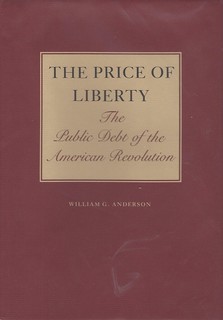 "An excellent general reference on this topic is William G. Anderson, The Price of Liberty: The Public Debt of the American Revolution (Charlottesville: University Press of Virginia, 1983). It has an extensive history of the Revolutionary War debt and how it was repaid. As for documents, it covers both debt certificates of the United States and those of the individual states, including Vermont, with extensive illustrations and rarity ratings. It also has an index and bibliography. There is a useful explanation of the difference between a certificate of debt and a bill of credit, both of which are numismatic items collected by colonial and confederation-era American specialists.
"An excellent general reference on this topic is William G. Anderson, The Price of Liberty: The Public Debt of the American Revolution (Charlottesville: University Press of Virginia, 1983). It has an extensive history of the Revolutionary War debt and how it was repaid. As for documents, it covers both debt certificates of the United States and those of the individual states, including Vermont, with extensive illustrations and rarity ratings. It also has an index and bibliography. There is a useful explanation of the difference between a certificate of debt and a bill of credit, both of which are numismatic items collected by colonial and confederation-era American specialists.
"Your illustration is not a debt certificate, but a receipt for two of them. Receipts are specifically excluded from Anderson's coverage, along with warrants, drafts on the treasury and vouchers. He says: Vouchers and receipts are not certificates of debt, while pay warrants and treasury drafts, although often issued for the same purpose as certificates, e.g., settlement of accounts, are excluded because they were usually settled immediately and did not become part of the public debt.
"
Thanks. I had the book handy and made these scans. -Editor
To read the earlier E-Sylum article, see:
LOAN OFFICE CERTIFICATES
(https://www.coinbooks.org/v25/esylum_v25n01a12.html)
The Long Way Home
Alan Luedeking writes:
"If anybody likes stories about the PanAm Clippers, I can highly recommend one about the "real" Clipper (the Boeing B-314) piloted by Captain Robert Ford, trapped in the Pacific by the outbreak of World War II, and what happened to it. No spoilers, just read "The Long Way Home" by Ed Dover — a true story and a thrilling read."
To read the earlier E-Sylum article, see:
LOST CLIPPER GOLD-BACKED BANKNOTES THEORY
(https://www.coinbooks.org/v25/esylum_v25n01a30.html)
More Bronzed Copper Images
Craig Sholley passed along a couple more examples of bronzed copper pieces from Stack's Bowers sales. Thanks! -Editor
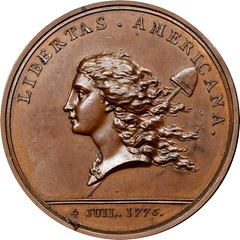
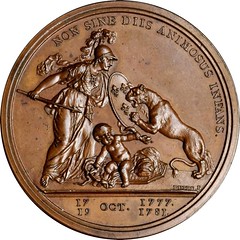
1781 Libertas Americana medal. Betts-615. Copper. Original. Paris Mint. 47.8 mm, 710.6 grains. 3.5 - 3.6 mm thick. Choice Mint State.
To read the earlier E-Sylum article, see:
ON BRONZED COPPER
(https://www.coinbooks.org/v25/esylum_v25n01a11.html)
Hydeman 1913 Nickel Slide
Bill Daehn writes:
"The January issue of The Numismatist contained an announcement (p. 23) that the famous Hawaii Five-O
specimen of the 1913 Liberty Head Nickel was recently sold by Stack's Bowers for more than $4 million. This specimen is also known as the Olsen-Hydeman specimen. I believe it was when World-Wide Coin Investments purchased the coin from Abe Kosoff in 1972 that they announced (in Coin World or Numismatic News?) the availability of a free 35mm color photographic slide of the coin. As a 12-year old budding collector in 1972, I was fascinated by this coin and requested a copy of the slide. I still have it and am wondering how many others still have one of these. Here are photos of each side of the slide."
Cool - thanks. Does anyone else have one of these? -Editor
WAR OF 1812 IN AMERICAN AND BRITISH MEDALS
British Numismatic Society Secretary Peter Preston-Morley writes:
"Our Society's annual meeting at NYINC will take place in the Morgan Suite at the InterContinental New York Barclay, on E 48th Street, on Saturday January 15th, at 4 PM.
I'm very pleased to say that our speaker will be John Kraljevich, one of America's leading professional numismatists, who won't need any introduction to most of your readership. His talk is entitled We owe allegiance to no crown: the War of 1812 in American and British medals.
"The meeting will be chaired by Robert Hoge, Curator Emeritus at the American Numismatic Society. All are welcome, and you don't have to be a member of the Society to attend."
Here's a summary of John's planned talk. -Editor
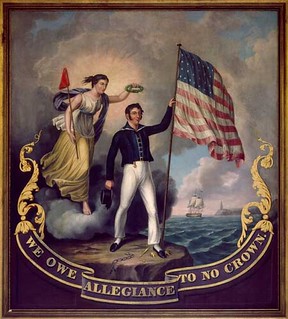 Canadians celebrate it. Indigenous people curse its memory. Americans forgot about it. And the British, having burned down the White House, are just amused by it! The War of 1812 represented an inflection point in the history of North America, a multi-front war that tested the promise and wisdom of the adolescent American experiment. Though little more than a draw militarily, the survival of the United States represented a substantial victory for the new nation.
Canadians celebrate it. Indigenous people curse its memory. Americans forgot about it. And the British, having burned down the White House, are just amused by it! The War of 1812 represented an inflection point in the history of North America, a multi-front war that tested the promise and wisdom of the adolescent American experiment. Though little more than a draw militarily, the survival of the United States represented a substantial victory for the new nation.
The United States government celebrated their fortune with more official medal types for this three-year conflict than any other war, including the American Revolution. This lecture will examine the American military and naval medals issued during the War of 1812, British-issued commemorative and campaign medals related to the war, and medals that fit into the often-overlooked Anglo-native conflict that underscored the entire episode.
For more information, see:
https://www.britnumsoc.org/
https://www.nyinc.info/
2022 NATIONAL MONEY SHOW EXHIBITS
I didn't have a chance to publish this ANA press release when it first came out last month, but for those looking forward to the year's coin shows, here's a preview of some great planned attractions at the 022 Colorado Springs National Money Show. -Editor
Historic gold coin will make rare public appearance, March 10-12
Described by the American Numismatic Association Money Museum as "one of the most coveted coins in the numismatic universe," the ANA's 1933 Indian Head $10 gold Eagle will be publicly exhibited for the first time in years at the 2022 National Money Show® in Colorado Springs, Colorado, March 10-12.
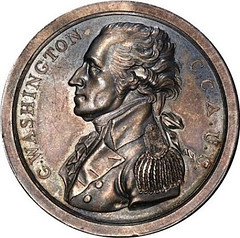 Show attendees will also see the first exhibition of examples of George Washington-related medals from the Historical Society of Pennsylvania and the first display from a recent, major donation of California Territorial gold coins.
Show attendees will also see the first exhibition of examples of George Washington-related medals from the Historical Society of Pennsylvania and the first display from a recent, major donation of California Territorial gold coins.
The show will be held at the world-famous Broadmoor resort in Colorado Springs.
The United States Mint produced 312,500 gold Eagles in 1933; however, less than 40 are known to survive today because most of the coins were melted after President Franklin D. Roosevelt issued Executive Order 6102 in April of that year. That order forbade "the hoarding of gold coin, gold bullion, and gold certificates within the continental United States."
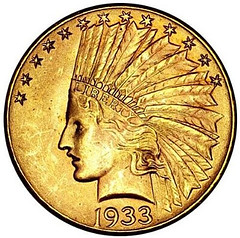 "This 1933 Eagle was donated to the ANA more than 80 years ago by collector F.C.C. Boyd of New York and coin dealer James Macallister of Philadelphia. It usually is kept safely in the vault and occasionally exhibited in the Money Museum," explained ANA Museum Director Douglas Mudd. "The display at the 2022 National Money Show will be a rare public appearance for this historic, rare coin designed by acclaimed sculptor
Augustus Saint-Gaudens."
"This 1933 Eagle was donated to the ANA more than 80 years ago by collector F.C.C. Boyd of New York and coin dealer James Macallister of Philadelphia. It usually is kept safely in the vault and occasionally exhibited in the Money Museum," explained ANA Museum Director Douglas Mudd. "The display at the 2022 National Money Show will be a rare public appearance for this historic, rare coin designed by acclaimed sculptor
Augustus Saint-Gaudens."
Visitors to the three-day show will also see examples of George Washington-related medals from the famous Baker Collection that was previously owned by the Historical Society of Pennsylvania. The medals were recently donated by ANA benefactor Dwight Manley. Additional medals from the Baker-Manley Collection will be on display at the ANA Edward C. Rochette Money Museum.
A member reception at ANA headquarters in Colorado Springs will be held on Thursday, March 10, from 6 to 7:30 p.m. to unveil "The Medal in America" exhibit at ANA headquarters. Round-trip shuttle transportation from The Broadmoor is available for those who pre-register.
Also making a first public appearance at the National Money Show at The Broadmoor will be highlights from a recent donation of California Territorial gold coins from iconic California Gold Rush-era issuers such as Kellogg & Co., Wass, Molitor & Co. and Norris, Greg & Norris. The historic gold pieces, as well as a complete set of 1915 Panama Pacific Exposition coins, were given to the ANA by Dr. Carlson Chambliss.
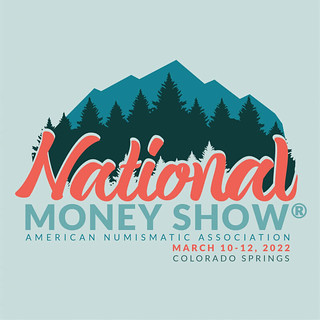 Additional American Numismatic Association Money Museum items that will be on exhibit at the show include rare examples of the first United States dimes from 1796 and 1797 with the small eagle design only issued in those two years.
Additional American Numismatic Association Money Museum items that will be on exhibit at the show include rare examples of the first United States dimes from 1796 and 1797 with the small eagle design only issued in those two years.
"The National Money Show will provide collectors access to hundreds of dealers offering extensive numismatic inventory at all price levels, an auction conducted by Classical Numismatic Group (www.CNGcoins.com), exhibits of rare and historical treasures, and educational programming for both beginning and seasoned hobbyists," explained ANA Executive Director Kim Kiick.
Attendees can obtain hotel booking information at NationalMoneyShow.com.
PCGS RECLASSIFIES FUGIOS AS REGULAR U.S. ISSUES
The past never changes, but our knowledge and understanding of it often does. In this press release, PCGS announces its reclassification of the Fugio Cent as a regular U.S. issue. -Editor
The Fugio Cent has long been one of the most enjoyed early American collectibles, and now numismatists can count it as the earliest of all United States regular-issue coins.
Professional Coin Grading Service (www.PCGS.com) is announcing the groundbreaking reclassification after an exhaustive study carried out by a team of leading numismatic experts including John Dannreuther, Gordon Wrubel, Craig Sholley, Brian Greer, Chuck Link, Tony Terranova, Chris Victor-McCawley, David McCarthy, and Erik Goldstein.
The Fugio Cent is one of the most popular coins from the early Federal period, so it's a
big deal when new research sheds enough light to completely reshape the hobby's
understanding of an iconic coin like this,
says President of Professional Coin Grading
Service Stephanie Sabin. By officially recognizing the Fugio Cent as a regular-issue
circulating coin based on the overwhelming evidence presented by our numismatic
experts, we help enhance the hobby's understanding of this important coin and its
foundational role in the early United States monetary system.
PCGS Director of Numismatic Education and Grading Team Leader Steve Feltner is
intrigued at how much information lay beneath the surface of such widely studied and
collected coins like the Fugio Cent. Fugio Cents, long lumped into the same colonial
class as New Jersey Coppers, Nova Constellatio Coppers, and Massachusetts Cents,
are finally going to get the numismatic credit that they have deserved for nearly two and
a half centuries!
Feltner says the decision to reclassify the status of the Fugio Cent wasn't something to
be taken lightly. When I was first approached about the idea of reclassifying Fugio
coppers as Fugio Cents, I will admit I was skeptical. So much has been studied and
written about them in the past that I couldn't imagine anything warranting a change.
He concludes, I was wrong.
Adds Feltner, The research and historical backing that was presented to me and my
colleagues at PCGS was irrefutable. There were several times during the initial read-
through that I caught myself saying, ‘that makes sense.' It was an experience that I will
never forget.
Among the evidence warranting the reclassification of the Fugio Cent as a regular-issue
coin is a measure passed by the Board of Treasury on April 21, 1787, noting that the
Fugio Cents were to be of the federal standard
per weight standards stipulated in the
1786 report for United States gold, silver, and copper coins. As part of these standards,
cents were to contain 157.5 grains of pure copper. So, when Congress authorized the
contract for Fugio Cents on this date, the intent was to produce coins that were needed
in commerce.
The reclassification of the Fugio Cent as a regular-issue coin isn't the first time PCGS
has led the way in properly recognizing coins that may have been numismatically
miscategorized in the past. Years ago, PCGS was the first grading service to classify
1792 Half Dismes, once listed among pattern coins, as regular issues. A Guide Book of
United States Coins (The Red Book
) and others soon followed suit.
The reclassification of the Fugio Cent means PCGS will list them among regular-issue
coinage, under the heading of Federal Contract Coinage,
and they will retain their
position among PCGS Colonial Registry Sets. Read the January/February issue of the
PCGS Rare Coin Market Report for the full story on why PCGS is reclassifying the
Fugio Cent as a regular-issue coin. For more information about the PCGS Set Registry,
please visit
https://www.pcgs.com/setregistry.
Image: Fugio Cent
This specimen of the 1787 Fugio Cent, a variety known as United Above, States Below, is highly coveted among collectors and belongs to a popular series PCGS is reclassifying as a regular-issue coin. Courtesy of PCGS TrueView.
Image: April 1787 Journals of Congress
An extract from the Journals of the Continental Congress for April 21, 1787. Public domain image.
VOCABULARY TERM: HALLMARKS AND HALLMARKING
Here's another entry from Dick Johnson's Encyclopedia of Coin and Medal Terminology. -Editor
Hallmarks and Hallmarking. A group of related symbols applied to silver and gold items indicating the maker, the date and the quality of its precious metal. From two to five symbols – applied by a punch, puncheon and called a mark – were stamped into existing silver and goldware. Hallmarking required some type of assaying and was first the mark of purity or fineness of the metal. The concept of hallmarking by an entity not the maker was that it guaranteed the purity of the precious metal by a third-party, the item did not have to be re-assayed at any later time. It thus aided in preventing fraud (of less pure metal being sold for higher purity).
The importance for marking metalwork was so strong that guilds of goldsmiths (and similar trade associations in modern time) have supported this practice for 700 years. It is obvious that one cannot ascertain the purity of any silver or gold item by mere inspection, it must be tested for the precious metal content (assaying).
What the Goldsmith's Company of London (later the Worshipful Company of Goldsmiths) did was to create a marking system that was instantly recognizable and supported its guarantee. At first it was a warden of the Goldsmith's Company who had custody of the punches and only he was allowed to do the stamping. Goldsmiths, silversmiths – the original makers – would send their finished product, fully made lacking only the final polishing.
Unlike other marks (mintmarks, maker marks, signatures) it was not originally intended to identify who or where the item was made, but only to attest to the metal purity. These marks were introduced later as part of the hallmarking and a long heritage in the use of hallmarks became standard for British silver and gold items, their acceptance around the world with other cities and countries adopting similar hallmarking. It also led to applying symbols to other metalware, as pewter (where the marks were called touches) or Sheffield plate, and even to ceramics, furniture and tapestry.
Hallmarking numismatic items. British coins generally were not hallmarked, neither were the coins of most countries. The authority of the sovereign or the national integrity was a satisfactory guarantee enough of the precious metal content of the coins. Other nations however – Union of South Africa most notably – did hallmark their silver and gold coins. With so much precious metal produced in that country they insisted the fineness of their coins be absolute and they attested to it by hallmarking.
Medallic items produced in England in gold and some in silver were indeed hallmarked. British decorations, badges, Masonic jewels, fraternal medals.
History of hallmarking. The first hallmarking was done in the year 1300, the attesting and marking was done by the Goldsmith's Company of London, and the practice has continued to the present time in the British Empire and copied in different forms in other cities and countries.
The testing was done at the Goldsmith's Hall (thus, the source of the term, hallmark). A tiny bit of silver or gold was scraped off and assayed. If it met the standard the stamp was applied. If it was not the item was broken. Thus it was greatly to the advantage of the makers to maintain – or exceed – the purity of the metal.
Punch identification. Some marks were used for a long time, others, as date mark, for only a year's time. The lion passant was the mark for silverplate and used after 1850.
Maker's mark. Letters, symbol(s) or logo of the firm that manufactured the silver or gold item.
Lion passant or Sterling mark. The mark of authority of the Goldsmith's Hall in use since 1544.
King's mark or Crowned leopard's head. Indicating the royal grant. The Leopard's head alone without was the crown was the mark of the Tower Mint.
Date letter, Year letter or Year mark. A letter for each year progressing through the alphabet (omitting J) from A through U in 20 year cycles; each cycle in a different typeface and with a different background shape. One of the most useful marks, since it can identify the year of manufacture (even though the year starts March 30th). These marks were in use from 1500 to present.
Sovereign's head. A tiny profile of the current monarch.
Britannia mark. In use only for short period, 23 years, 1697 to 1720 as lion's head erased; hence a rare mark.
Drawback mark. Intended for export incuse mark of Britannia to indicate repayment of duty; in use for very short time first 6 months of 1785. Very rare.
Coronation mark. Issued during or for coronation. Highly collectable.
World's Fair mark. Issued during a world's fair. Highly collectable.
Millennium mark. Issued only in 1999 and 2000 with figures 2000 in arms of a cross.
Tally mark. A personal mark of an individual maker
in a large shop. It was called tally
so he could be
credited for payment.
Duty mark. Separate mark (current monarch's head) indicating tax on the item has been paid (1785-1890).
To read the complete entry on the Newman Numismatic Portal, see:
Hallmarks and Hallmarking
(https://nnp.wustl.edu/library/dictionarydetail/516030)
HARVEY STACK AND STACK'S BOWERS GALLERIES
American Numismatic Biographies author Pete Smith submitted this article on the late Harvey Stack and the creation of Stack's Bowers Galleries. Thank you! -Editor
Harvey Gerald Stack (1928-2022)
Harvey Stack was the last of his generation with the family firm of Stack's. The numismatic and auction version of Stack's dates back to 1933. Joseph (1891-1974) and his younger brother Morton (1901-1967) reformed their father's brokerage house to service the rare coin market. The next generation included Joseph's children, Shirley (1904-1991), Benjamin (1925-1984) and Norman (1928-1992), and Morton's son Harvey. After the death of Norman in 1992, only Harvey and his son, Lawrence, remained with the Stack's company.
I interviewed Harvey for his biography at the 100th anniversary ANA convention on August 14, 1991. He gave me the basic information: he was born on June 3, 1928, in Manhattan and attended New York University. He married Harriett Spillman and had two children, Lawrence and Susan, who also worked for the firm.
The death notice from Stack's Bowers stated that it wasn't until 1947 that he went to work full
time for Stack's Rare Coins.
That would make him nineteen at the time.
Harvey was an activist in promoting numismatics. On February 28, 1973, he joined five others to testify before the Commerce and Finance Committee in support of the Hobby Protection Act. In 1995 he testified before the House Committee of Banking and Coinage to support the statehood quarters program.
Harvey was appointed to the U. S. Assay Commission for the bicentennial year 1976. He joined the PNG in 1978, served on the board after 1979, as vice president 1985 to 1989 and as president 1989 to 1991. In 2000 the PNG presented him with their Lifetime Achievement Award.
Harvey Stack joined the ANA as Junior Member J-14827, effective November 1, 1947, again at age nineteen. The ANA gave him a Medal of Merit in 1991, and in 1997 he was named Numismatist of the Year.
In 2021 he was included in the top 10 of Coin World list of The Most Influential People in Numismatics 1960-2020. In his listing he stated that as a licensed auctioneer he conducted more than 800 public sales.
One of Harvey's contributions to his company and the hobby was to promote the history of
Stack's. He provided a series of articles to the company blog Harvey Stack Remembers
Growing up in a Numismatic Family.
This was reprinted in
The E-Sylum.
He would have been eligible for the ANA 75-Year Member Award in 2022. He died on January 3, 2022.
Here's a photo from the Baltimore show March 28, 2014 with Dave Bowers, Harvey Stack,myself and Larry Stack. -Editor
Stack's Bowers Galleries
To an uninformed collector, Stack's Bowers Galleries may sound like a partnership of two respected long-time dealers. Today it is the subsidiary of a large corporate entity. The firm claims a legacy back to 1933 and yet listed Harvey G. Stack as their founder. This misses a few steps along the way.
Stack's merged with American Numismatic Rarities on November 15, 2006. The merged company, still called Stack's, listed Q. David Bowers and Harvey Stack as Co-chairmen. Lawrence Stack was also an equity partner. Anderson Press acquired a controlling interest in 2008. Harvey Stack and Lawrence Stack retired in 2009 leaving Bowers as Chairman of the Board.
The Escala Group changed its name to Spectrum Group International on May 19, 2009. They had acquired Bowers and Merena Auctions from Collectors Universe. In 2011 Stack's was merged with Bowers and Merena to become Stack's Bowers Galleries. Harvey and Lawrence came out of retirement to work with the new firm. At that time the company was owned 51% by Bowers and Merena Auctions and 49% by Stack's. In 2013, Spectrum bought the remaining 49% to become sole owner of the company.
The Stack's Bowers website includes this opening statement, Stack's Bowers Galleries has been
conducting live, Internet and specialized auctions of rare U. S., World and ancient Coins and
Currency since 1933.
They list Q. David Bowers, Harvey G. Stack and Lawrence R. Stack as
their founders.
The first sale conducted by Stack's was dated October 15, 1935. Their first Internet sale came some time later. The founders relate to a firm with the same name that came out of the 2006 merger. They were only with Stack's Bowers since 2011.
Apparently, in acquiring the company, Spectrum acquired the assets, a respected company with a long history and a set of founders who had been competitors through much of that history.
To read earlier E-Sylum articles, see:
DAVE BOWERS ON THE ANR-STACK'S MERGER
(https://www.coinbooks.org/esylum_v09n39a20.html)
HARVEY AND LAWRENCE STACK REJOIN STACKS-BOWERS
(https://www.coinbooks.org/esylum_v14n22a10.html)
HARVEY STACK'S NUMISMATIC FAMILY, PART 1
(https://www.coinbooks.org/v20/esylum_v20n39a14.html)
RESEARCHING THE NEW YORK NUMISMATIC SOCIETY
Recently American Numismatic Society Librarian David Hill and Joel Orosz authored an ANS Pocket Change article about a little known incarnation of the New York Numismatic Society which may well have been the first numismatic association in the United States. A key piece of information in their article came from a newspaper article pasted into a book produced by Charles Ira Bushnell which Joel purchased from John Lupia.
John had discovered this tidbit earlier and added it to the draft of a planned second volume of his book on American Numismatic Auctions. John has since expanded his research with additional references to the organization, and published it on his website. With permission we're publishing an excerpt here - see the developing research online via the link below.
Thank you! Great discoveries. It seems Bushnell was a member of the first numismatic society in the United States, which predated the Numismatic Society of Philadelphia and the American Numismatic Society (both founded in 1858). -Editor
This essay is dedicated to John W. and Regina Adams, Dave Bowers, Joel Orosz, and David Hill, and fond memory of the late Eric P. Newman.
What follows is part of an over all work on the history of collecting in America. It is interesting to note that there are two distinct personalities regarding collecting. First, is the collector of one degree or another, from the light collector to the hoarder. Second, the opposite personality that can't wait to dispose of things. The curious thing is they frequently marry.
Below ... are the titles of the ... organizations as they appear in antique printed texts. The third one cited is the monkey wrench in the works. The fourth one is odd since in the American Journal of Numismatics (AJN) it is referred to as the organization that publishes the Journal at a loss. Later on the AJN office moved to Boston and their numismatic society is cited as the publisher. It is possible the last two below are organizations belonging to the last half of the 1860's. So far the bulk of the evidence would suggest the that but no certain documentation has surfaced as yet that can definitively reveal the dates of their initiation. Yet one never knows for certain about such things until New York State Archive records of their incorporation can be found to settle any questions once and for all. I have contacted the New York State Archives requesting various records and await further communication from them. The fifth is not affiliated with New York but with Philadelphia, and does not contribute to the scope of this essay on New York.
For easy reference I've listed John's section headings here.
- New York Numismatic Society, 1852?/1853-1855?
- American Numismatic and Archaeological Society, 1858 to present
- Numismatic and Archaeological Society of New York, circa 1840's, 1850's, or 1860's?
- American Numismatic and Archaeological Society of New York, occurs variously in the American Journal of Numismatics
- The Numismatic Society of Philadelphia of 1857 renamed The Numismatic and Antiquarian Society of Philadelphia , 1865
- Second New York Numismatic Society, 1864 to 1866
New York Numismatic Society, 1852?/1853-1855?
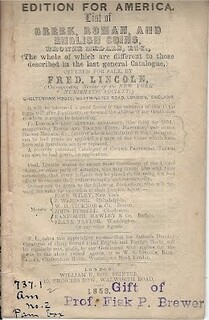 Right: Fred Lincoln's 1853 American edition of his Fixed Price List (FPL) on Greek, Roman and English coins. This copy Ex-Fisk P. Brewer, the numismatist at Yale University who donated this to the library. Now deaccessioned.
Right: Fred Lincoln's 1853 American edition of his Fixed Price List (FPL) on Greek, Roman and English coins. This copy Ex-Fisk P. Brewer, the numismatist at Yale University who donated this to the library. Now deaccessioned.
Frederick Lincoln (1830-1909) is the eldest son of William Simpson Lincoln, Sr. (1803- 1872), and brother of William Simpson Lincoln, Jr. (1844-1922), and Edgar Lincoln (1851-1916) all of them renown English numismatists, stamp and coin dealers with correspondents in America. The Lincolns came from Lambeth, Surrey, England where William Sr., began as a bookseller in the 1840's and eventually dealt in foreign postage stamps beginning in 1853. Fred and Edgar specialized in Roman coins.
The fact that Fred Lincoln was a corresponding member of the New York Numismatic Society tells us that among the literature in England at least by 1853 one learned of it and wrote to an address, was elected a corresponding member, and received correspondence and perhaps its literature all prior to Lincoln's publication of his 1853 FPL. We do not know the month this was published which could clue us in if the New York Numismatic Society was formed sometime in 1852 or earlier. Coin dealers are known to typically publish a FPL at the beginning of the year. If this is the case here then we must concede that the New York Numismatic Society must necessarily date to at least the last half of 1852. I have searched but not found a notice in the 1853 Numismatic Chronicle, or perhaps I was negligent and missed it. Yet somewhere in the literature or newspapers read by members of the English numismatic community some notice or notices existed either in 1852 or 1853.
Fred Lincoln mentions on the cover of his FPL of ancient coins that he is a corresponding member of the New York Numismatic Society. We're glad he published this fact since his mention of it in his 1853 publication assists us in dating this organization which seems to have become obscured and lost in the shadows of the monolithic and monumental American Numismatic and Archaeological Society founded several years later by some of its membership. It is very possible that something of that Society will surface soon and be discussed by its owner or discoverer. It is even possible that something of that Society is within my own collection that has become forgotten, neglected, or simply buried in any of over 600 binders and several large bins of material plus a very large and extensive library.
So dear reader take heed and look about your own collections to see if anything there might contribute to this early American numismatic history and the founding of the first New York Numismatic Society. I've always suspected that throughout earlier American history there were such strong ties among some collectors in different places that formed circles, perhaps called a brotherhood, committee, association, society, or some other sort of group name other than society which were a bit more informal and on a more social basis. After all their friendships were within learned societies. They were already members of societies though as yet had not attained self consciousness of themselves as a united entity distinct as a specialized numismatic group from within their own societies. It was from these earlier formed associations among collectors that the formal Society emerged.
The citation of the New York Numismatic Society in Livingstone's Law Register (1854) : 458 reads: "[Founded] for the collection and preservation of Coins". Nearly every entry in the book gives the year the organization was founded. The New York Numismatic Society is one of the few exceptions to this rule and is without any date of the organization. From the description of the purpose of the Society it seems like they were establishing a state or city numismatic society as a repository for a vast collection. It apparently existed for at least about three years or perhaps more. But to keep a physical collection one needs real estate. They must have had a property given or purchased for this purpose and should be listed in a city directory, but no such entry has been found. Perhaps it did not have its own building but was housed in the Astor Library, for example, which opened its doors to the public in 1854. The building was nearly completed in February 1851 and had at that time 28,364 volumes.
Were the founders of the first New York Numismatic Societies trustees and board members of the Astor Library? Is there any evidence in the Astor Library Annual Reports? Or, were the founders of the Society an offshoot of the New York Historical Society? So far none of this is known or the collections whereabouts. Whatever collection existed cannot be traced so far through a sale of any kind and one wonders if it was absorbed by the ANS on its founding in 1857? Or, was it the coin collection of the New York State Library catalogued by Richard Wistar Davids, known primarily for having edited the Catalogue of the Coins and Medals, Ancient and Modern, New York State Library, published in 1853? It makes sense putting the thin piece of evidence in Livingstone's Law Register that the New York Numismatic Society was a Society of New York State collecting coins for the State Library.
American Numismatic and Archaeological Society, 1858 to present
The ANS was apparently the second, or perhaps, third or fourth numismatic society in America by 1858. Though this might be a sobering or somber fact to some it in no way diminishes the preeminence and prestige of the inestimable ANS which is the longest active numismatic society in America. Besides in 1958 the ANS historian Howard Adelson had to concede that the Numismatic Society of Philadelphia predated the ANS by several months.
Numismatic and Archaeological Society of New York, circa 1840's, 1850's, or 1860's?
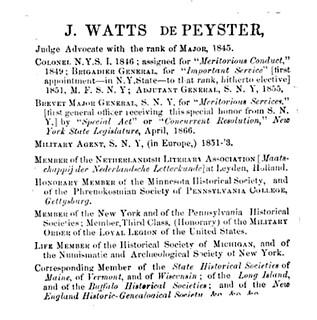 Right: DePeyster says he's a Life Member of the Numismatic and Archaeological Society of New York, bookplate in G. Auchinleck's, The War of 1812. A History of the War Between Great Britain and the United States of America (Toronto, 1852). The latest date cited among the honoraria is April, 1866. Though he is not yet a member of the American Numismatic and Archaeological Society according to their own records he does boast of the other New York society which amply demonstrates these are two separate and distinct organizations. Of course, though the latest date on the bookplate is 1866 it does not preclude that some of the societies listed are not more recent in the late 1860's or even 1870's. But we shall follow the wisdom of Occam's razor and stick to the facts as they are evident in the document since it is supported by subsequent editions of his bookplate in 1869, and 1883. The DePeyster family were Abolitionists. In his 1883 bookplate DePeyster proudly advertises that he is a Patron for the Association for the Benefit of Colored Orphans.
Right: DePeyster says he's a Life Member of the Numismatic and Archaeological Society of New York, bookplate in G. Auchinleck's, The War of 1812. A History of the War Between Great Britain and the United States of America (Toronto, 1852). The latest date cited among the honoraria is April, 1866. Though he is not yet a member of the American Numismatic and Archaeological Society according to their own records he does boast of the other New York society which amply demonstrates these are two separate and distinct organizations. Of course, though the latest date on the bookplate is 1866 it does not preclude that some of the societies listed are not more recent in the late 1860's or even 1870's. But we shall follow the wisdom of Occam's razor and stick to the facts as they are evident in the document since it is supported by subsequent editions of his bookplate in 1869, and 1883. The DePeyster family were Abolitionists. In his 1883 bookplate DePeyster proudly advertises that he is a Patron for the Association for the Benefit of Colored Orphans.
American Numismatic and Archaeological Society of New York, occurs variously in the American Journal of Numismatics.
Apparently what we now call the American Numismatic and Archaeological Society (ANS), may have been initially called the Numismatic and Archaeological Society of New York, a name and title that can still be found in its house organ the AJN, with the prefix American added. The citation by John Watts DePeyster in 1866 that he is a Life Member of the Numismatic and Archaeological Society of New York and fourteen years later adding on that bookplate he is a also a member of the American Numismatic and Archaeological Society opens the question of the original date of that organization. Could it have been organized before 1858 or earlier? The clear distinction between the two names is that the ANS is a national organization, whereas the latter was either intended as a New York State organization, or a local one for the city. Could it have been a city or state society from which the ANS had sprung into being?
The ANS was the national society whereas the American Numismatic and Archaeological Society of New York is clearly a city or state society that appears to have been formed to support the ANS and its activities but also used the AJN as their house organ together with the ANS, and for sharing that they paid for its publication. We see these names so frequently reading the period literature we are jaded by them and do not recognize the forest for the trees. Yet on scrutiny these are clearly two different entities in print and coinages acting as one. The social elite formed the ANS and its membership was the same for the American Numismatic and Archaeological Society of New York since as a city collectors club they paid the bills. It seems that the ANS as a national society was the birth child of the American Numismatic and Archaeological Society of New York which created in those meetings held at the home of Augustus B. Sage at 121 Essex Street on March 15, 1858 with Henry O. Hart, James D. Foskett, James Oliver, and Edward Groh, to for the ANS to become the national repository of their collections of numismatic items, literature, correspondence and served as their business office.
The Lincoln Memorial medal of 1866 (ANS 1915.82.1) bears the inscription or legend The American Numismatic and Archaeological Society of New York. These two organizations have been deemed as one and the same by the ANS, but why two names that are distinctly corporately separate? Currently, research is awaiting a reply from the New York State Archives for records of incorporation.
The Second New York Numismatic Society that dissolved and merged with the ANS in 1866 was formed in 1864. It is possible that the older New York Numismatic Society dating to at least 1853, or possibly 1852, already had its roots formed a few years earlier in the 1840's called by an earlier name the: "Numismatic and Archaeological Society of New York", and is cited in John Watts De Peyster's various bookplates as we find them in the following three books that once formed a small part of his vast library : Dossabhaee Sorabjee, Idiomatically Sentences in the English, Hindostanee, Goozratee, and Persian Languages (Bombay, 1843); Tom Owen's, Anecdotes and Letters of Zachary Taylor (NY: Appleton, 1848), and later on in G. Auchinleck's, The War of 1812. A History of the War Between Great Britain and the United States of America (Toronto, 1852).
The atmosphere was electric with the zeitgeist of national societies and institutes. On 27 September 1842, John P. Brown, First Dragoman of the American Delegation at Constantinople published his letter of that date as a public notice in the Commercial Advertiser and Journal, Buffalo, New York, 28 November 1842, bequeathing his vast collection of coins gathered in his travels in the East to the National Institute, Washington, D.C. This was the national repository for coin collections at that time. Certainly, this sparked ideas in the numismatic community to think about state and local collections that already existed for many years within their learned societies that one society should be formed exclusive to numismatics respectively as a national numismatic society.
John Watts DePeyster would have been twenty years old in 1841, and apparently active as a numismatist from boyhood as all were from their classics classes at school. He was an old blue-blood of New York with great-great grandfather, and great-great-great grandfather who were mayors of the city.
He introduces himself in his 1866 and 1869 bookplate as a Life Member of the Numismatic and Archaeological Society of New York leaving us wondering if it might refer to an earlier appellation for the first New York Numismatic Society? It is curious that his second bookplate dating from 1869 never refers to the American Numismatic and Archaeological Society though their records indicate he was a member in 1867, but rather, he only lists the Numismatic and Archaeological Society of New York, to which he proudly announces himself as a Life Member. This status of memberships changes on his later bookplate of 1883 when he mentions both the American Numismatic and Archaeological Society, and Numismatic and Archaeological Society of New York, and the Numismatic and Antiquarian Society of Philadelphia clearly as three separate and distinct organizations. In 1875 DePeyster declined the office of Vice-President of the ANS deferring to his nephew Frederick. Say 1883 he no longer concealed his membership in the ANA but acknowledged it. Consequently the individual Society called the Numismatic and Archaeological Society of New York is separate and apart from the ANS. There is no evidence so far to attribute this organization to an alternative name for the second New York Numismatic Society or as a referent to the ANS.
Second New York Numismatic Society, 1864 to 1866
 Right: The second New York Numismatic Society formed in 1864 published its dissolution notice and merger with the ANS, The Daily Memphis Avalanche, Friday 23 November 1866.
Right: The second New York Numismatic Society formed in 1864 published its dissolution notice and merger with the ANS, The Daily Memphis Avalanche, Friday 23 November 1866.
Robert Hewitt, held a meeting of numismatist in his residence on January 23, 1864 forming the second New York Numismatic Society.
Howard L. Adelson, The American Numismatic Society 1858-1958, pages 41-43; and Dave Bowers cites this more precisely in his American Numismatics Before the Civil War 1760-1860, page 129, footnote 2 "the "majority of the members" who signed a resolution to dissolve the New York Numismatic Society effective July 31, 1866 included these names: William Anderson, Charles DeF Burns, James Earle, Joseph E. Gay, Robert Hewitt, Jr., Joseph N. T. Levick, John F. McCoy, John A. Nexsen, W. C. Prime, William H. Strobridge, and Loring Watson none of whom had been associated with the American Numismatic Society during the 1858-1859 era of Augustine B. Sage's involvement." This could be supporting evidence that these men upon dissolution formed a new society, the Numismatic and Archaeological Society of New York. This has yet to find supporting documentation.
I have not been able to discover a record of incorporation for the New York Numismatic Society. One would think had they been they would have a corporate seal, logo, issued a medal and tokens to distribute to members and have a house organ publish the minutes of their meetings, by-laws, and other, notes, and literature. Bushnell in his book, An Arrangement of Tradesmen's Cards, Political Tokens and Election Medals, Medalist, &c. (1858) never mentions any. Perhaps this was the impetus behind Augustus B. Sage's Numismatic Gallery of medals of illustrious numismatists to make up for lost time. What manner this earliest New York Numismatic Society had is yet to be discovered and with such enthusiasts as we have today as we did then I'm sure these details are imminent.
Of recent date we find such enthusiasts in Joel Orosz and David Hill who perhaps were poking at me to publish this brief introduction to the establishment of the first known numismatic society in America when they ran there brief articles in various publications December 2021. Apparently I needed the nudge since I had mistakenly thought this matter had already been known by one of the Deans of American numismatic history. Once I understood I was not stepping on anyone's toes I seized this opportunity to create this very brief introduction to the subject. This is but a thumbnail sketch for a fuller volume to be published as an ebook sometime in 2022. So check back here from time to time to catch the announcement.
The early numismatic society names and name changes are confusing, but all part of the rapidly developing mid-19th century numismatic scene. Some of these names no doubt refer to what we now know as the American Numismatic Society. Hopefully New York state archives and other potential sources will reveal additional information enabling today's researchers to sort this out. John's discovery of an early incarnation of a New York Numismatic Society is exciting. Check your libraries as he suggests. Hopefully in time we'll develop a handy chart to clarify the chronology of events that brought about all the short- and long-lived numismatic organizations that reflected and shaped the numismatic hobby and science in America. -Editor
To read the complete article, see:
NEW YORK NUMISMATIC SOCIETY
(https://sites.google.com/a/numismaticmall.com/www/numismaticmall-com/new-york-numismatic-society)
To read the earlier E-Sylum article, see:
FIRST U.S. NUMISMATIC SOCIETY?
(https://www.coinbooks.org/v24/esylum_v24n52a09.html)
A BEVY OF BECHTLERS
A blog article by researcher Ron Guth of the the Numismatic Detective Agency examines a great group of Bechtler gold in the Heritage FUN sale. Here's an excerpt - see the complete article online. -Editor
Few Americans know that the first Gold Rush in the United States began in North Carolina -- not California -- and that the first major discovery of gold in America was in 1799, not 1848. The second Gold Rush took place on Cherokee lands in Georgia in 1829. Difficulties in transporting southern gold the long distance to the U.S. Mint at Philadelphia gave rise to private mints beginning in 1830 and eventually resulted in the establishment of branch mints at Charlotte, North Carolina and Dahlonega, Georgia in 1838.
One of the more successful private minters was the Bechtler family. Between 1832 and approximately 1850, the Bechtlers produced large quantities of $1, $2.50, and $5 gold pieces. Bechtler coins were well-received and continued to circulate even after the U.S. government opened their competing operations.
Today, Bechtler coins are among the most popular privately-minted gold coins. Most of the 29 varieties listed in Don Kagin's "Private Gold Coins and Patterns of the United States" are rated Rarity 5 (31-75 examples known) or higher. Two additional varieties are very rare Proof restrikes. Thus, the challenge, difficulty, and expense of completing a variety set forces most collectors to settle for a denomination set or a set of major varieties. Nowadays, it is rare for a major rare coin auction to contain one or more pieces.
A surprising exception is the January 2022 F.U.N. sale being conducted by Heritage Numismatic Auctions. As part of the larger Buffalo Bayou Collection of Pioneer Gold Coins, Heritage is offering fourteen lots of Bechtler gold coins, including several extreme rarities and numerous Condition Census candidates. The following comments are offered by the Numismatic Detective Agency (NDA) to assist bidders in understanding the coins and formulating their bids (see the important Disclaimer at the end of this article).
Sixteen lots are evaluated for rarity, grade and provenance. -Editor
To read the complete article, see:
A Bevy of Bechtlers: A Look at Heritage's 2022 F.U.N. Sale
(https://numismaticdetectives.com/blog/f/a-bevy-of-bechtlers-a-look-at-heritages-2022-fun-sale)
HERITAGE FUN CURRENCY AUCTION ERRORS
I've been wanting to show these great error notes for a few weeks now, and they're coming up in the Heritage January 12-14 FUN Currency Auction. In the December 23, 2021 Heritage Currency News email newsletter, Frank Clark published a group of highlights. -Editor
We are proud to present 59 different lots of error notes at our upcoming FUN Auction. Their estimates range from $1,500 and up to $35,000. In this article, we would like to discuss a few of the most distinctive errors.
The first is a doubled print error on a Fr. 1935-D $2 1976 FRN graded PMG Gem Uncirculated 65 EPQ. This error is from a small group of the best-known representatives of this error type. It is the third printing of the serial numbers, Treasury seal, district seal, and of all four district "4" indicators that is doubled.
The doubling is so far off in that there is very little overlap of the two printings which makes this one dramatic example of this error type. When one thinks of this type of error, the $2 examples from the Cleveland district are what most collectors imagine.
The second error is a complete "fourth printing" back on front multiple impression error with the host note being a Fr. 2027-E $10 1985 FRN grading PMG Extremely Fine 40. The back was printed first, then the sheet was flipped over and sent through the presses a second time where it received a complete second back printing on the unprinted side. Then its third and fourth printings consisted of the front and also the overprint on the front with its serial number. That translates to three printings on the front and one on the back. The US Error Note Encyclopedia second edition by Stephen M. Sullivan discusses this error type on pages 197-98 stating that this is a non-standard multiple impression due to the back being printed on the front and that "the rarest non-standard multiple impression is a note that has a correctly positioned back printed over its face. The extra back printing is equally as dark as the normal back printing." This is certainly the case for this Richmond $10 in our upcoming auction.
We would like to discuss next an error on a large size note. It is a partially printed error note on a Fr. 1215a-1216b $500 1882 Gold Certificate grading PCGS Banknote Very Fine 30. It is missing two of its three front printings. Therefore, the front of the note contains only the word "GOLD" plus ornamentation printed in orange ink. This is paired with a normal back printing in orange ink. Errors are rarely found on high denominations or Gold Certificates.
Our fourth error highlight is of a retained obstruction error on a Fr. 1975-H $5 1977A FRN grading PCGS Banknote Choice Unc 64 PPQ. Both major error note references, US Error Note Encyclopedia second edition by Stephen M. Sullivan and United States Paper Money Errors A Comprehensive Catalog & Price Guide fourth edition by Dr. Frederick J. Bart, have assigned their highest rarity rating of R9 to the category of retained obstruction errors. That is on par with the error category of double denominations in both error references. The retained obstruction error we are offering at FUN is a piece of currency stock that affixed itself to the face on the right side after the first face printing.
This extra piece of currency stock covered approximately 40% of the note and received the overprinting of the serial number, the Treasury seal, and two district "8" indicators. The obstruction remained in place until the note was released in the wild and was discovered with its retained obstruction. Many coincidences are needed in order for the obstruction to be retained through this long process. This example of this error type is held in such high regard that it was used as a plate note on page 299 of the Sullivan reference. Both the error note and its retained obstruction reside in an oversized PCGS Banknote holder. This is one of the most dramatic and well-preserved examples of this rare error type to ever cross our desk.
The next striking error we are going to mention is a mismatched suffix F*/F-L Fr. 1917-F*/F $1 1988A Web Press Experimental FRN grading PMG Very Fine 30. The left serial number has the F* block and the right side displays the F-L block. The "*" is the incorrect part of the serial number as it was mistakenly put in the numbering wheel suffix position instead of another "L" by the press operator. Earlier a "*" slug was accidentally thrown into the "L" slug letter bin in order to put these actions in motion. We have auctioned only one other example of this error previously.
The final error we are going to discuss from this impressive offering of error notes is a double denomination error on a Fr. 2071-K $20/$10 1974 FRN grading PCGS Banknote Choice Unc 64 PPQ. Double denominations are known as the "King of Errors" and rightfully so. This is the only double denomination to escape into the wild from the confines of the BEP since the 1950s. The news of these "$30" notes coming out of Houston hit in the summer of 1978. The BEP stated that they had printed ten sheets of 32 of these double denominations. They were able to retrieve 280 examples of this error from the Dallas Federal Reserve Bank and the Houston Branch of the Dallas FRB. However, that meant that there were forty $20/$10 errors in circulation. Many of those went unnoticed and were eventually withdrawn from circulation and destroyed in the course of normal banking procedures. That leaves very few for collectors to compete for.
I have discussed six highlights of our error offering, but there are many more in our FUN auction that can become highlights in their next owner's collection. We look forward to seeing the competition as these errors cross the auction block.
STEPHEN ALBUM RARE COINS AUCTION 42
Here's the press release for Stephen Album Rare Coins upcoming Auction 42. Great material! -Editor
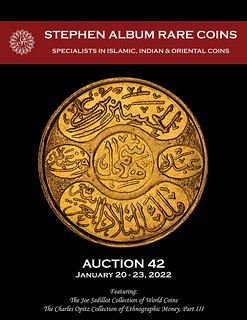 Stephen Album Rare Coins will hold its Auction 42 on January 20-23, 2022 at its offices in Santa Rosa,
California. The Auction is made up of 3,200 lots of Ancient, Islamic, Chinese, Indian, and General World
Coins.
Stephen Album Rare Coins will hold its Auction 42 on January 20-23, 2022 at its offices in Santa Rosa,
California. The Auction is made up of 3,200 lots of Ancient, Islamic, Chinese, Indian, and General World
Coins.
Featured in the sale is the Joe Sedillot Collection (Part I) which includes a wide array of type coins from numerous countries. A large proportion of the coins in the collection are in choice condition and were selected for encapsulation in PCGS holders. Additional selections from the collection will be offered in subsequent auctions in Spring 2022. Also featured in this sale is The Charles Opitz Collection of Primitive Money, Part III.
One notable change the firm has made beginning with this auction is that group/bulk lots are now consolidated at the end of the sale for more convenient locating (see lots 2752 to 3200).
Select highlights will be on display at the New York International Numismatic Convention, January 13-16, 2022. Some highlights from the sale follow:
LOT 55: ANCIENT: ROMAN IMPERATORIAL PERIOD: Brutus, AR denarius (3.80g), travelling military mint,
late summer-autumn 42 BC, Crawford-507/2, Sydenham-1298, moneyer P. Servilius Casca Longus, struck
in western Asia Minor or northern Greece, laureate bust of Neptune to right, trident below, CASCA
LONGVS // victory advancing right on broken scepter, holding palm frond over shoulder and broken
diadem bound with fillet with both hands, BRVTVS IMP, superb strike, attractive toning with golden
highlights, EF.
Estimated at $3,000-$4,000.
LOT 237: ISLAMIC: ABBASID OF YEMEN: al-Mustakfi, 944-ca. 950, AV reduced weight dinar (1.91g),
‘Adan, AH334, A-Y1061, Zeno-269320 (this piece), standard Abbasid legends, without reference to the
amiri
denomination; known only from a small group posted on Zeno, where it is assigned to the
Ma'nid dynasty, VF-EF, RRRR.
Estimated at $5,000-$6,000.
LOT 498: INDIA: BRITISH INDIA: Victoria, Empress, 1876-1901, AV 5 rupees, 1879(b), KM-494, S&W-
6.26, proof restrike, NGC graded Proof 62, ex John Page Collection.
Estimated at $8,000-$10,000.
LOT 712: CHINA: KWANGTUNG: Kuang Hsu, 1875-1908, AR 50 cents, ND (1890-1905), Y-202, L&M-134,
a lovely bright white lustrous example! PCGS graded MS63.
Estimated at $10,000-$15,000.
LOT 728: CHINA: KWEICHOW: Republic, AR dollar, year 17 (1928), Y-428, L&M-610, auto dollar
type,
variety with three grass blades, a bold lustrous strike! NGC graded AU53.
Estimated at $30,000-$40,000.
LOT 857: WORLD: ANDAMAN ISLANDS: Penal Colony, AE rupee token, 1861, KM-Tn1, Prid-1, portrait of
Queen Victoria left, center hole as made, PCGS graded XF45. In 1855, the British government proposed a
settlement on the islands which would include a convict establishment. The 1857 Indian First War of
Independence delayed construction but provided many new prisoners. Construction began in November
1857 at the renovated Port Blair. Rupee tokens were issued in 1861 and 1866, although internet
research has not revealed any past auction results for the pieces dated 1866. The tokens were
withdrawn from circulation in 1870.
Estimated at $8,000-$10,000.
LOT 1110: WORLD: HEJAZ: al-Husayn b. ‘Ali, 1916-1924, AV dinar hashimi, Makka al-Mukarrama
(Mecca), AH1334 year 8, KM-32, Schön-12, King of Arab Lands
type, NGC graded MS62, RRRR. To our
knowledge, only four pieces bearing the legend Malik al-Bilad al ‘Arabiya
(King of the Lands of
Arabia
) are known to exist today. It is said that this regal legend claiming sovereignty over the Lands of
Arabia outraged other Arab leaders, in particular King ‘Abd al-'Aziz, then ruler of the Nejd. In order to
placate his critics, al-Husayn b. ‘Ali ordered that the offending legend be amended to The Renaissance
of the Lands of Arabia
, which can be seen on the more commonly encountered types such as Lots 1108
and 1109.
Estimated at $150,000-$250,000.
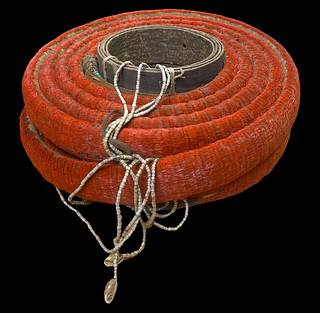 LOT 1721: ETHNOGRAPHIC: SOLOMON ISLANDS: Santa Cruz Islands, feather coil money (3519g), 19th to
early 20th century, Opitz p.142-43, Knox p.50, ca. 8.17m (26'-9½") long and 5cm wide (2"), rolled into a
5-layered double-row coil ca. 35cm in diameter (14"), fully intact and covered in feathers, decorated
with strings of coix seed money and shells, EF, RRR, ex Charles Opitz Collection. Tevau (teau) feather coil
money is composed of some 50,000 to 60,000 red feathers of the scarlet honeyeater bird (Myzomela
cardinalis). It was used as a currency in bridal transactions and for other large expenditures on the
Islands of Santa Cruz in eastern Melanesia. Depending on the condition and the visibility of the red
feathers, the coils were valued differently. A first-grade coil had to be brilliantly red. Until the mid-20th
century, the bride price was ten coils of different grades. For that, some families ran up debts for the
rest of their lives. Only hereditary currency binders were authorized to make feather coils. A full coil
could take them 500 to 600 man-hours, making it prohibitively expensive. It ceased to be used as money
in the late 1970s but continues to serve as indicators of value and objects of prestige to this day.
LOT 1721: ETHNOGRAPHIC: SOLOMON ISLANDS: Santa Cruz Islands, feather coil money (3519g), 19th to
early 20th century, Opitz p.142-43, Knox p.50, ca. 8.17m (26'-9½") long and 5cm wide (2"), rolled into a
5-layered double-row coil ca. 35cm in diameter (14"), fully intact and covered in feathers, decorated
with strings of coix seed money and shells, EF, RRR, ex Charles Opitz Collection. Tevau (teau) feather coil
money is composed of some 50,000 to 60,000 red feathers of the scarlet honeyeater bird (Myzomela
cardinalis). It was used as a currency in bridal transactions and for other large expenditures on the
Islands of Santa Cruz in eastern Melanesia. Depending on the condition and the visibility of the red
feathers, the coils were valued differently. A first-grade coil had to be brilliantly red. Until the mid-20th
century, the bride price was ten coils of different grades. For that, some families ran up debts for the
rest of their lives. Only hereditary currency binders were authorized to make feather coils. A full coil
could take them 500 to 600 man-hours, making it prohibitively expensive. It ceased to be used as money
in the late 1970s but continues to serve as indicators of value and objects of prestige to this day.
Estimated at $4,000-$6,000.
SARC Chief Operations Officer Mike Barry commented: Everyone thinks of us as the company that sells
Islamic, Indian, Chinese and other Asian coins. We have been building our general world coin offerings
over the years, and those efforts have culminated in this sale which features a higher caliber of world
coins and broader range of types in choice condition than we have ever offered before. It should stand
out as one of our best sales to date and bidders will take notice that we sell rare coins across all
categories and that these lots are not to be overlooked
The firm is now taking consignments for future premier and internet auctions.
More information can be found on their website at www.stevealbum.com
NUMISMATIC AUCTIONS LLC SALE 66
Steve Davis of Numismatic Auctions LLC passed along this announcement of his January 2022 sale #66. Look forward to more details in the upcoming weeks. -Editor
Absentee Bidding Closes January 31, 2022 - Internet Bidding Closes February 7-11, 2022
Featuring the Robert H. Colegrove and Grand Blanc Collections along with many other fine consignments!
- Nearly 3300 lots total of Rare US, Canadian, Ancient and World Coins, Paper & Exonumia
- More than 250,000+ coins and 50,000+ Banknotes featured throughout!
- Over 1000 Lots of US Coins, Paper & Exonumia plus Lincoln Memorabilia
- Nearly 500 Lots of US & World Gold Coins, Medals & Bars
- Rare Scales and Counterfeit Detector Devices and Currency Detectors
- Early US Federal Coinage Including Chain, Wreath and Liberty Cap 1793 Coppers to Dollars
- Early US Copper & Type, Sets, Morgan Dollar Rolls & Singles, Gold & Exonumia
- Rare Territorial Gold, Key Dates, Carson City & Dahlonega Mint Rarities
- Key Date Mint State 1925-D &S and 1931 $20 Gold Pieces
- Rare Chinese Ancient to Republic & Modern Coins, Paper and Coinage Dies
- A fantastic offering of Russian Coins, Paper Money & Medals
- Sets of Swiss Shooting Talers, Norway, Japan & German Weimar Commemoratives
- A specialized High Grade offering of hundreds of Rare Conder Tokens & World Exonumia
- Nearly 1400 Lots of World Coins and 400 Lots of World Paper Money
Steve and Lisa Davis
Numismatic Auctions L.L.C.
P.O. Box 22026
Lansing, MI 48909
USA
www.numismaticauctionsllc.com
Phone: 517-394-4443
Fax: 517-394-0579
Email:
numauctionsllc@aol.com
THE BOOK BAZARRE
STACK'S BOWERS TO SELL SYD MARTIN COLLECTION
In a press release this week, Stack's Bowers Galleries announced their planned sale of the Syd Martin Collection. Wow! We'll look forward to the catalog(s)! -Editor
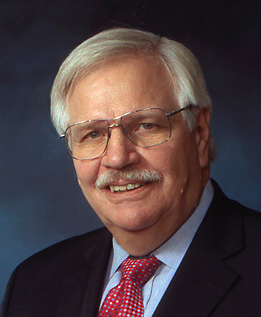 For three decades, Sydney F. Martin of Doylestown, Pennsylvania and Amelia Island, Florida
was a preeminent figure in American numismatics. He served as president of the American Numismatic Society and
was the author of standard references on no fewer than four early American numismatic specialties. Mr. Martin was
a graduate of the Massachusetts Institute of Technology and founder of The Sytex Group, which provided services
to the defense and intelligence communities before its acquisition by Lockheed Martin in 2005.
For three decades, Sydney F. Martin of Doylestown, Pennsylvania and Amelia Island, Florida
was a preeminent figure in American numismatics. He served as president of the American Numismatic Society and
was the author of standard references on no fewer than four early American numismatic specialties. Mr. Martin was
a graduate of the Massachusetts Institute of Technology and founder of The Sytex Group, which provided services
to the defense and intelligence communities before its acquisition by Lockheed Martin in 2005.
Stack's Bowers Galleries of Costa Mesa, California has been selected to sell Martin's many remarkable numismatic collections at public auction over a several year span, beginning in 2022. Stack's Bowers Galleries has sold most of the finest collections of pre-Federal coins presented at auction over the last 50 years. Many of Martin's most prized specimens will be offered at events in conjunction with the Baltimore Whitman Expos, the American Numismatic Association's World's Fair of Money, and the November conventions of the Colonial Coin Collectors Club.
Our world-class expertise in this specialized area was a natural pairing with Mr. Martin's world-class collection,
said Brian Kendrella, Stack's Bowers Galleries president. After spending years of his life and many millions of
dollars building one of the finest numismatic cabinets of all time, Syd left very particular instructions on how the
cabinet should be dispersed. We're grateful that we are able to provide all the aspects he sought from a numismatic
auction firm.
Blessed with a warm personality, remarkable memory, and limitless curiosity, Martin's approach to numismatics was organized and studious, informed by strong relationships with dealers and fellow collectors as well as a superb numismatic library. His cabinet began modestly, but his acquisitions increased in magnitude in the early 2000s. At that time, he undertook the construction of a reference collection broad enough to fully examine the die varieties of series like the Rosa Americanas, the St. Patrick coinages, the Wood's Hibernias, and the coins of the French colonies in North America. He was as attracted to humble pieces of great academic value as he was marquee rarities, and his success in business and careful approach allowed him to acquire great numbers of both. The Martin Collection includes thousands of early American coins and medals, and it will take years to carefully catalog and present at public sale.
The Martin Collection could be compared to the Norweb Collection (sold by Bowers and Merena in 1987-88) in its expansiveness and its inclusion of headline rarities, but it's both bigger and deeper than Norweb. It could be compared to Garrett (1979-81) or Ford (2003-13), but either comparison underestimates the breadth of series that Martin explored. The collection of Connecticut coppers is both the most complete and most important ever assembled. The collections of other early copper series, notably including the New Jerseys, is similarly important. The series that Syd Martin collected and researched vigorously enough to produce new standard references — the St. Patricks, the coinage of William Wood, and the French colonial series — are unlike any collections that have ever been formed or could conceivably be formed again. Massachusetts silver, colonial type coins, Fugio coppers, coins and medals of George Washington, Betts medals, and more, are all present in world-class quality.
The cataloging of the Martin Collection will focus on Martin's unique approach and important legacy, with early American expert John Kraljevich leading an experienced Stack's Bowers Galleries team. Kraljevich and Martin's friendship dates back decades, to small town shows in their native Pennsylvania, and continued as both grew in experience and expertise.
It's an honor to have a chance to contextualize Syd's amazing efforts and bring them — and his coins — not only
to a new generation of collectors, but to pages that will memorialize his contributions for numismatists not yet
born,
Kraljevich said. The man was the total numismatist: scholar, writer, collector, and companionable colleague.
I'm so thankful he did so much work to improve the community of numismatic scholars and collectors, and we all
owe him a debt. These catalogs are one way we can say thanks.
To read earlier E-Sylum articles, see:
SYDNEY F. MARTIN (1945-2021)
(https://www.coinbooks.org/v24/esylum_v24n04a02.html)
ROGER SIBONI REMEMBERS SYD MARTIN
(https://www.coinbooks.org/v24/esylum_v24n04a03.html)
MORE ON SYD MARTIN
(https://www.coinbooks.org/v24/esylum_v24n04a04.html)
NUMISMATIC NUGGETS: JANUARY 9, 2022
Here's a selection of interesting or unusual items I came across in the marketplace this week. Tell us what you think of some of these. -Editor
Medal depicting George Washington receiving a peace pipe from a Native American chief. U.S. Seal verso. Large version, engraved, not cast, with what looks like a lion seal at the hasp, riveted edge. Includes chain. 6 5/8" x 4 7/8", very good condition. 8.98 ozt.
From Thomaston Place Auction Galleries in Maine. The lot description says nothing about authenticity. Did we see this one before? -Editor
To read the complete lot description, see:
RARE COIN SILVER INDIAN PEACE MEDAL 1792
(https://live.thomastonauction.com/lots/view/1-58TGF7/rare-coin-silver-indian-peace-medal-1792)
The City of London, Merchant Tailors School, the Montefiore Hebrew Prize, instituted 1838, glazed and frosted silver medal, by B. Wyon, arms and motto of the Merchant Tailors' Company, with camel supporters. Reverse: legend with details, named on silver outer rim to A.L. SADLER 1903
, in fitted case of issue with ‘B. Wyon' stamp in inner lid. Sir Moses Montefiore (1784-1885), 1st Baronet, FRS, was a British financier and banker, activist, philanthropist and Sheriff of London. He was the first Jewish liveryman of the Merchant Tailors' Company. For many years Montefiore would attend Speech and Prize Day and present this medal himself to the awardees.
Nice medal. I'd never seen nor heard of this one before. -Editor
To read the complete lot description, see:
Rare Montefiore Silver Medal
(https://www.appelauction.com/auction/8/lot-348-rare-montefiore-silver-medal/)
BRITISH GUIANA. Copper Stiver Token, 1838. William IV. NGC MS-64 Brown.
KM-Tn3; Prid-61. According to Pridmore, these interesting tokens were struck circa 1880 from a rusted dies, as evidenced by the surfaces, and found in a bog in Ireland. With beautiful toning, this example entices with its unusual history.
Interesting piece with attractive mint red coloring. How many "found in a bog in Ireland" pieces are in your collection? From the January 2022 NYINC Stack's Bowers Auction. -Editor
To read the complete lot description, see:
BRITISH GUIANA. Copper Stiver Token, 1838. William IV. NGC MS-64 Brown.
(https://auctions.stacksbowers.com/lots/view/3-USPWE/british-guiana-copper-stiver-token-1838-william-iv-ngc-ms-64-brown)
WORLDWIDE: LOT of 40 prison tokens & ephemera items, including Australia (1), Canada (3), Denmark (1), France (1), Germany (1), Great Britain (1), Greece (1), Turkey (4), Eastern United States/Alabama (3), Arkansas (3), Connecticut (1), Delaware (3), Florida (6), Georgia (1), Ephemera/Maine tickets (2), Maine coupon books (6), Mississippi POW coupon (1), and Pennsylvania coupon book (1); average circulated grades, and some uncs, most identified by Zara numbers, in consignor's 2x2 holders, viewing recommended; retail value $750, lot of 40 pieces.
Interesting group of world prison tokens and scrip in the Stephen Album Auction 42. -Editor
To read the complete lot description, see:
WORLDWIDE: LOT of 40 prison tokens & ephemera items
(https://www.sarc.auction/WORLDWIDE-LOT-of-40-prison-tokens-ephemera-items_i43852698)
CELTIC GOLD COINS DISCOVERED IN BRANDENBURG
Arthur Shippee passed along this story about a find of Celtic gold coins from Brandenburg. Thanks - I was unfamiliar with the smooth rainbow cups type. Found via The Explorator newsletter. To subscribe to Explorator, send a blank email message to: explorator+subscribe@groups.io. -Editor
Together with the state archaeologist Prof Dr Franz Schopper, the numismatist Marjanko Pilekic and the finder and volunteer archaeologist Wolfgang Herkt, the Minister for Culture Dr Manja Schu¨le presented the largest hoard of Celtic gold coins found in the state of Brandenburg on 13 December 2021 in Potsdam.
The Minister of Culture Dr Manja Schüle said: A Celtic gold hoard has never been found in Brandenburg before. The 41 discovered gold coins are a sensation, an invaluable source of information and they offer a unique glimpse into our past. It was a volunteer archaeologist specialized in ground monuments who literally uncovered this important piece of state history. These professionals are important for understanding the past, which is precisely why they can tell us so much about the future. Overall there are more than 50,000 archaeological sites and about 12,000 ground monuments in the state. They are an essential part of our cultural history, our identity, our tradition.
The numismatist Marjanko Pilekic, who scholarly reviews the hoard, added: Not only is this the second largest hoard of smooth rainbow cups of this type ever found and by far the largest hoard of Celtic coins in Brandenburg, the location of the hoard is also far away from the Celtic settlement areas. Therefore there are some challenges regarding the interpretation of this hoard.
The 41 gold coins were found near the village of Baizu in the district of Potsdam-Mittelmark. They are of Celtic origin. The particularity: the Celts never lived in Brandenburg, and the 41 gold coins are well over 2,000 years old. The discovery sheds light on the far-reaching networks of early Europe. The Celts were an ethnic group of the Iron Age. The coins are mainly made of gold and silver as well as some copper. Currently, a display of the coins is being prepared in the Archaeological State Museum of Brandenburg. The find was located within a settlement of the early Germanic Jastorf culture. The find indicates that this culture was of supra-regional importance and had a long-distance network.
To read the complete article, see:
Hoard Of Celtic Gold Coins Discovered In Brandenburg
(https://archaeologynewsnetwork.blogspot.com/2021/12/hoard-of-celtic-gold-coins-discovered.html)
RUNZE COLLECTION HAMMERED ENGLISH PENNIES
The King Offa penny caught my eye in this blog article by Stack's Bowers Numismatist for World and Ancient Coins Nicholas Fritz. My good friend Tom Fort studied Offa's coinage, and sported a great OFFA REX license plate. -Editor
Medieval coinage from the fall of Rome through the beginning of the modern period in 1600, excepting Byzantine coinage, has always been understudied and undercollected. This span of over 1,000 years includes diverse hammered and cast issues from Europe, the Near East, China, and India. Despite this, British hammered coinage from medieval times has always attracted attention and scholarship.
After the fall of Roman Britain in A.D. 410, factional forces jockeyed for control of the British Isles. A series of kingdoms waxed and waned in power for nearly five centuries until the unification of all English kingdoms. It was during this period that a distinctive British currency called the Pound Sterling evolved. The native coinage of England from this time was often known as Denarii, after the Roman denomination that had long circulated there, and from which the British Pence received its short designation of d-. These coins, along with broader thinner ones bearing the name of the king, came to be known as Pennies and for nearly a half-millennium were the only circulating coinage in Britain.
The standard major unit of accounting in Britain at the time was the Tower pound, weighing approximately 350 grams. These Pennies bore a weight of 1.3-1.5 grams of silver, making each worth approximately 1/240th of a Pound. In 1158, Henry II set the fineness standard for silver coinage at .925 fine, or sterling silver. From this arose the name of the currency that is still in use today in Britain, the Pound Sterling. British currency therefore was literally One Tower Pound of sterling silver. The value of a penny at 1/240th of a Pound remained fixed until 1966, well after silver of any fineness was removed in British coinage. The ancient nature of the British Pound Sterling gives it a strong claim as the longest continually used currency, and these hammered Pennies are always in great demand.
In the January 2022 NYINC Auction, Stack's Bowers Galleries is delighted to offer several extremely rare early hammered Pennies in phenomenal condition, all originating from the Runze Collection. Lot 1185 offers a choice very fine Penny from the reign of Offa, king of Mercia. Offa was one of the first rulers to attach their names to coinage, and therefore his issues are some of the most appealing pre-Norman issues. Lot 1189 presents a Penny from the reign of Aethelwulf, King of Wessex, graded AU-55 by PCGS. Father to Alfred the Great, Aethelwulf resisted Viking encroachment as ruler of Wessex, and as one of the most consequential kings, his coinage is always in demand. Very few hammered Pennies survive in condition such as this, with both a strong strike and nearly unhandled surfaces. Aethelwulf's son, Alfred the Great defeated the Viking's Great Heathen Army in 878 and is remembered as both a capable ruler and tactician. Lot 1192 is near the pinnacle of all British hammered Pennies, an issue of Alfred the Great, in stunning preservation. Evenly struck and sharp in the legends, this example still displays attractive shine and shimmer. A grade of AU-58 from PCGS defines this piece as a rarity, as nearly all examples of the type exhibit some sort of damage or problem.
These Pennies, along with the entire January 2022 NYINC auction is available for viewing and bidding at StacksBowers.com, where you can also see our upcoming auction schedule and future offerings.
To read the complete article, see:
Some Choice Hammered English Pennies from the Runze Collection
(https://www.stacksbowers.com/News/Pages/Blogs.aspx?ArticleID=english-hammered-pennies-runze-collection-stacks-bowers-galleries)
To read the earlier E-Sylum article, see:
EDWARD TOMLINSON FORT (1961-2021)
(https://www.coinbooks.org/v24/esylum_v24n41a04.html)
A CORRECTION TO TREASURE (RHODE) ISLAND
On December 18, 2021 Oliver Hoover published an ANS Pocket Change blog article with a correction to his earlier post regarding Jim Bailey's theories about Islamic coins found in North America. Here's a lengthy excerpt - see the complete article online. -Editor
On April 9, 2021, Pocket Change hosted a post of mine that took issue with the popularization of a theory originally published by Jim Bailey in the Colonial Newsletter in 2017. In Bailey's article, it was argued that silver khamsiya coins of Qasimid Yemen (Fig. 1) found (increasingly, it seems) in North America—particularly in Connecticut, Maine, Massachusetts, and Rhode Island—are directly connected to the English pirate Henry Every and his crew after their plunder of the Mughal treasure ship Ganj-i-Sawai in 1695.
Figure 1. Qasimid silver khamsiya of al-Hadi Muhammad III dated AH 1105 (AD 1693/4) similar to coins found in New England. ANS 1971.229.3.
As part of my criticism of the theory that the coins must have come with Every's men as they sought to escape the long arm of the embarrassed British authorities, I challenged the reading of the date on one of the find coins illustrated by Bailey in CNL—a khamsiya of the Qasimid imam Muhammad III using the laqab al-Hadi (the Provider of Guidance
) (Fig. 2)
Figure 2. Grayscale image of the Qasimid silver khamsiya of al-Hadi Muhammad III found by Jim Bailey. As published in the Colonial Newsletter 164 (August 2017), p. 4575, fig. 1.
In this greyscale image the vertical linear element in the final numeral of the date gave the impression to me and others that the date should be read as ???? (AH 1108 or AD 1696/1697) rather than ???? (AH 1105 or AD 1693/1694). If read as AH 1108, the coin must have been struck after the capture of the Ganj-i-Sawai and therefore could not have possibly been carried off by Every's pirates in 1695.
Last week I was given the opportunity to see the original color images of the coin from the CNL article (Fig. 3).
Figure 3. High-quality digital image of the Qasimid silver khamsiya of al-Hadi Muhammad III found by Jim Bailey.
From these it is very clear and indisputable that the final digit of the date is actually ? as published by Bailey and not ? as I had suggested. Hopefully, it should be equally clear when comparing the final digit of this coin to the ANS specimen illustrated above how the erroneous reading came about (Fig. 4).
Figure 4. AH 1105 date comparison between the ANS specimen and Bailey's specimen.
The linear element in the digit on Bailey's find coin is by no means a regular feature of the Arabic numeral 5 on Qasimid coins and was the cause of the misreading of the date in the greyscale image. Indeed, it would be tempting to suggest that the numeral on Bailey's coin might be an AH 1101 (????) date that has been recut as AH 1105 (????) if not for the fact that khamsiyat struck by Muhammad III before AH 1105 feature the laqab al-Nasir (the One Who Gives Victory
) rather than al-Hadi and employ a different arrangement of the Arabic legends. Coins with the al-Nasir laqab are presently known in North America from finds in Connecticut, Maine, and Rhode Island while those with the al-Hadi laqab have been reported from Massachusetts and Rhode Island.
In any case, due to this new revelation, I wish to withdraw the dating argument made in my original post and apologize to both Mr. Bailey and to readers for injecting an unfortunate chronological red herring into the discussion of khamsiyat in North American find contexts. At present, there are no known khamsiyat found in North America with Hijri dates that fall after AD 1695. The latest date on a khamsiya with a North American find context known to me at present is an al-Hadi Muhammad III issue of AH 1106 (AD 1694/1695) found in northern Massachusetts and reported in April 2021.
Despite the mistaken reading of AH 1108 for 1105, however, I still stand by my original position that we are still very much lacking in solid evidence to clearly tie the khamsiyat found in North America directly to the piratical exploits of Henry Every's crew. At the moment, the case for Every's men as the mechanism for the arrival of Qasimid coins in the American colonies still seems somewhat circumstantial and speculative. Unless the movement of the coins from Yemen to the New England via the slave and/or coffee trades can be entirely ruled out, or until specimens are found in an unambiguous piratical context connected to known associates of Henry Every, there must remain some element of doubt about his crew as the ultimate source of khamsiyat in North America. For the not infrequent confusion of trade and piracy and the tendency of the East India Company to paint all interlopers into its area of trade as pirates, see John Kleeberg, The Circulation of Leeuwendaalders (Lion Dollars) in England's North American Colonies,
CNL 152 (August 2013), 4042–4043.
To read the complete Pocket Change articles, see:
TREASURE (RHODE) ISLAND? HENRY EVERY AND YEMENI COINS FOUND IN NEW ENGLAND
(http://numismatics.org/pocketchange/yemen/)
A CORRECTION TO TREASURE (RHODE) ISLAND
(http://numismatics.org/pocketchange/yemen-correction/)
To read the earlier E-Sylum articles, see:
QUERY: YEMENI COINS IN COLONIAL AMERICA
(https://www.coinbooks.org/esylum_v19n33a15.html)
ARABIAN SILVER COINS IN THE AMERICAN COLONIES
(https://www.coinbooks.org/v20/esylum_v20n39a19.html)
ARTICLE HIGHLIGHTS JAMES BAILEY'S COIN FINDS
(https://www.coinbooks.org/v22/esylum_v22n27a12.html)
PIRATE YEMENI COINS IN COLONIAL AMERICA
(https://www.coinbooks.org/v24/esylum_v24n14a18.html)
QUEEN'S PLATINUM JUBILEE COINS UNVEILED
David Pickup passed along this article about the Royal Mint's new coins commemorating Queen Elizabeth II's platinum jubilee. Thanks! -Editor
A commemorative coin showing the Queen on horseback has been unveiled by the Royal Mint ahead of Her Majesty's Platinum Jubilee.
The coin, made at the mint in Llantrisant, south Wales, is the first collectable UK 50p to celebrate a royal event and was designed by artist John Bergdahl.
In celebration of this landmark event, the official Platinum Jubilee collection, including the new 50p and traditional £5 crown, features a unique commemorative design on both sides of the coin.
Marking 70 years on the throne, the coin depicting the Queen on horseback will be struck on the ‘heads' side of a new 50p and traditional £5 crown.
The Royal Mint said the design is reminiscent of the equestrian designs for the 1953 Coronation and 2002 Jubilee crown pieces and has been personally approved by the Queen.
David adds:
"I think the 50 p coin with her majesty on horseback is a very effective design. The promotional material says this design is struck on the heads
side which seems strange."
To read the complete article, see:
Platinum Jubilee: Royal Mint unveils commemorative coin of Queen on horseback
(https://www.itv.com/news/2022-01-05/royal-mint-unveils-commemorative-coin-of-queen-on-horseback-for-platinum-jubilee)
Here's more on the coins from a Coin Update article by Michael Alexander. -Editor
The Royal Mint has unveiled (6th January) the new commemorative obverse design that will be included on Platinum Jubilee 50-pence coins. The equine theme featured pays tribute to the remarkable 70 years the Queen has served the nation and Commonwealth, as well as her love for horses, and her participation in one particular annual event in which she appeared on horseback for many years. The Queen has, since her accession in 1952 and until 1987, taken the salute of Trooping of the Colour, the official birthday of the sovereign, which she did on horseback. As a keen horsewoman, Queen Elizabeth II could be seen riding Burmese (1962–1990), a black RCMP police service horse. She was given to Queen Elizabeth II by the Royal Canadian Mounted Police in 1969 and took part in Trooping the Colour that same year and for 18 consecutive years until 1986.
Designed by noted British artist John Bergdahl, his design includes HM Queen Elizabeth II as she was seen on horseback during the Trooping of the Colour. Surrounding this depiction is the collar of The Most Noble Order of the Garter, an order of chivalry founded by King Edward III of England in 1348. The order's emblem is a garter with the motto HONI SOIT QUI MAL Y PENSE, which translated from Middle French means Shame on him who thinks evil of it.
The legend around the completed design reads ELIZABETH II D G REG F D FIFTY PENCE.
The reverse side, unveiled last month, is the work of the firm of Osborne Ross and features a sleek reverse design that comprises the number 70,
the Queen's cypher, and the years that span her reign thus far.
To read the complete article, see:
United Kingdom: New 50-pence coins unveiled with enduring commemorative obverse design for Queen's Platinum Jubilee
(http://news.coinupdate.com/united-kingdom-new-50-pence-coins-unveiled-with-enduring-commemorative-obverse-design-for-queens-platinum-jubilee/)
BANK OF CANADA MUSEUM ACQUIRES 1911 DOLLAR
The Bank of Canada Museum has acquired a centerpiece: a 1911 silver dollar. -Editor
After being the apple of many a coin collector's eye, The Emperor
has finally made its way into the Bank of Canada Museum's permanent collection.
The 1911 silver dollar had been in private hands for more than 60 years, but was recently acquired by the museum from a Canadian collector and will now have a permanent home in the National Currency Collection at the Bank Street heritage centre.
Unlike most coins that were mass produced, the 1911 silver dollar was never put into circulation, and only three trial strikes of the planned coin — or tests — were ever created: one in lead and two in silver.
After being catalogued as pattern coins, which are not intended for circulation, the 1911 silver dollar strikes had quite the journey around the world, turning up in collections in the United States, Australia, the United Kingdom and, of course, Canada. The Emperor was purchased at a public coin auction in 2003 for $1.1 million by a George H. Cook, a collector from Calgary.
The Bank of Canada Museum recently posted an article detailing how the coin finally came to be in its possession this past year: Mr. Cook held onto the coin for nearly two decades until he passed away in 2018, and his collection was auctioned in the United States. A prominent Canadian numismatic dealer acquired the coin and offered it to the Bank of Canada Museum to ensure that Canada's most important coin remains within Canada's public cultural sphere.
The sale price for the coin when it was sold at a 2019 U.S. coin auction was $734,000 — considerably lower than anticipated.
The three 1911 silver dollar specimens — nicknamed Emperor, King and Prince — are the three most coveted items among collectors of Canadian coins, and their uniting in the Bank of Canada Museum collection is the first time they have all been together since they were produced more than 110 years ago. It's a special moment for all Canadian coin and history lovers alike.
Before becoming available to the public, the coin apparently belonged to the family of the Deputy Mint Master of the Royal Mint, William Frey Ellison-McCartney. When McCartney retired from the Royal Mint in 1912, he took it with him when he went on to become Governor of Tasmania. McCartney died in 1924 and the 1911 dollar was passed on to his three children. The coin was sold to a London dealer, Blair A. Seaby in 1960. From 1960 to 2021, the coin changed hands several times, landing in the collection of a couple of major Canadian collectors including John McKay-Clements, who was a businessman and former mayor of Haileybury, Ontario (he owned the coin from 1965 until his death in 1976), and George H. Cook of Calgary (2003-2018), an entrepreneur and last owner of the coin before he passed away in 2018. Between McKay-Clements and Cook, the coin changed hands on several occasions among Canadian and American coin dealers.
To read the complete article, see:
Bank of Canada Museum acquires 1911 silver dollar deemed country's greatest rarity
(https://capitalcurrent.ca/bank-of-canada-museum-acquires-1911-silver-dollar-deemed-countrys-greatest-rarity/)
VERNON MEDAL INSPIRES HISTORIAN'S BOOK
Gerry Tebben writes:
"I love how numismatics can lead down a rabbit hole. A book review in Saturday's Wall Street Journal recounts how author Robert Gaudi's chance encounter with a 1741 medal in a Georgetown flea market led to his researching the life of Admiral Edward Vernon. Gaudi didn't buy the medal, but he did write a book about Vernon, the wonderfully named "The War of Jenkins' Ear."
"The review is illustrated with a massive (6.5 inches in diameter) photo of a VERNON CONQUERED CARTAGENA medal. (Robert Jenkins, by the way, was a suspected smuggler who, the review helpfully explains, "lost an ear while undergoing interrogation.")"
Thanks - here's an excerpt from the article. It's always nice to see numismatics reflected in the mainstream media, even when it's just in passing. -Editor
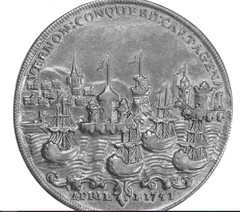 Browsing Georgetown Flea Market in Washington, D.C., writer Robert Gaudi chanced upon an old medal that piqued his curiosity. Keen to clinch a deal, the stall-holder was quick to emphasize that the tarnished item had
Browsing Georgetown Flea Market in Washington, D.C., writer Robert Gaudi chanced upon an old medal that piqued his curiosity. Keen to clinch a deal, the stall-holder was quick to emphasize that the tarnished item had some age on it,
a sales pitch that Mr. Gaudi soon discovered to be something of an understatement. An online search revealed the medal to be one among many variants struck to commemorate Adm. Edward Vernon, the hero of a largely forgotten colonial war waged between Britain and Spain from 1739 to 1742.
Although Mr. Gaudi declined to buy the medal, the discovery inspired his lively, sprawling and sometimes irreverent book about the conflict in which Vernon won fame, The War of Jenkins' Ear.
That curious title was only coined long after the last veteran was dead: British historian Thomas Carlyle first suggested the term in a footnote to his 1858 biography of Frederick the Great of Prussia, and the name stuck.
The incident in which suspected smuggler Capt. Robert Jenkins of the merchant ship Rebecca lost an ear while undergoing interrogation off Havana by coast guard
Juan de León Fandiño occurred in 1731. Years later the brutal episode was recalled as trading rivalries between Britain and Spain escalated. Whether Jenkins ever lobbied Parliament for redress, brandishing a jar containing his pickled ear, is debated by historians. But cartoons and ballads show that his sufferings were used as propaganda by Britons eager for war with Spain, seen as a declining power whose empire offered easy pickings.
In an opening move, the hawkish Vernon was sent to raid Porto Bello, in what is now Panama. The news that Vernon had fulfilled his bold boast to capture his objective with six ships only
prompted wild celebrations in Britain and her North American colonies, making him a figurehead for opponents of the pacifistic prime minister
Sir Robert Walpole.
Vernonmania
gave rise to commemorative medals and pottery, and coincided with the first performance of what would become Great Britain's unofficial national anthem, Rule, Britannia.
Communal bonfires and heavy drinking fuelled demands for an all-out onslaught upon Spanish America. Walpole reluctantly authorized a powerful task force, although he gloomily predicted that the joyful ringing of bells would be followed by a mournful wringing of hands.
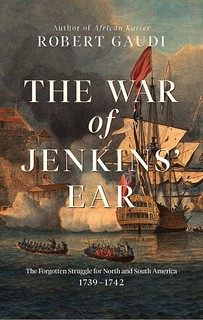 British America was expected to participate, and 4,000 colonial recruits were mustered into a new
British America was expected to participate, and 4,000 colonial recruits were mustered into a new American Regiment.
Its officers included 22-year-old Capt. Lawrence Washington, elder half-brother of future president George. The expedition's initial target was the port-city of Cartagena, in modern Colombia. Despite delays that gave the defenders time to prepare, Vernon's warships penetrated the narrow Boca Chica passage leading to the inner anchorage.
Reports of this success reached London in May 1741, prompting yet more triumphalist memorabilia. The medal that caught Mr. Gaudi's eye was struck to mark Vernon's conquest
of Cartagena, depicting the admiral receiving the city's surrender from a kneeling Spaniard, identified as Don Blass.
This was wishful thinking. Far from submitting, Cartagena's commander, Don Blas de Lezo y Olavarrieta, galvanized a stubborn resistance. Nicknamed El Medio
(Half Man
) because he had already lost a leg, an arm, and an eye fighting for his country, Don Blas was loath to bend his remaining knee to anyone.
To read the complete article (subscription required), see:
‘The War of Jenkins' Ear' Review: The Lobe Heard Round the Globe
(https://www.wsj.com/articles/the-war-of-jenkins-ear-review-the-lobe-heard-round-the-globe-11641572005)
To read earlier E-Sylum articles, see:
NEW BOOK: MEDALLIC PORTRAITS OF ADMIRAL VERNON
(https://www.coinbooks.org/esylum_v13n16a05.html)
BOOK REVIEW: MEDALLIC PORTRAITS OF ADMIRAL VERNON
(https://www.coinbooks.org/esylum_v13n33a05.html)
BOOK REVIEW: MEDALLIC PORTRAITS OF ADMIRAL VERNON
(https://www.coinbooks.org/esylum_v13n34a08.html)
DUKE OF WELLINGTON AFGHANISTAN GOLD MEDALS
Stack's Bowers Galleries will sell a set of four Specimen gold medals for the 1842-1843 Afghanistan Campaigns presented to the Duke of Wellington. Beautiful medals. Here's the lot description. -Editor
Magnificent Set of Four Specimens Presented to the Duke of Wellington
1842-43 Medals for Afghanistan Campaign Gold Strike Medals.
A unique object, created for and presented to Arthur Wellesley, the Duke of Wellington. Four gold medals, each housed in a gold-rimmed glazed case and contained in a custom made fine silk and leather lined leather case, tooled in blind and gilt, 115.5 x 115.5 mm. The case is hinged to allow each of the medals to be seen from obverse and reverse, and the cased and glazed medals are each easily removed. Each medal is struck with a matching fine frosted/matte finish in rich yellow gold. The medals, their glass enclosures, and the case, are all in flawless condition, essentially as issued. The medals included are:
1842 Candahar, Guznee, Cabul medal. MY-107, BBM-60. 45.02 gms.
1842 Jellalabad medal with Flying Victory reverse. MY-108 (second type), BBM-61. 45.64 gms.
1842 Medal for the Defense of Kelat-i-Ghilzie. MY-109, BBM-62. 45.83 gms.
1843 Scinde medal with Meeanee / Hyderabad reverse. MY-111, BBM-63. 46.61 gms.
Abundantly provenanced and spectacular in appearance, both this set and the medals therein are considered unique in gold.
Estimate: $15,000 - $20,000.
Provenance: From the Gem Collection.
Earlier from the collection of Arthur Wellesley, the Duke of Wellington; Apsley House Collection; Sotheby's sale of July 2, 1980, lot 139; Stack's / Morton and Eden's sale of the Dr. Arthur B. King Collection, October 2003, lot 582 (at 8625 pounds); Rex Stark.
To read the complete article and lot description, see:
Magnificent Set of Four Specimens Presented to the Duke of Wellington
(https://www.stacksbowers.com/News/Pages/Blogs.aspx?ArticleID=gem-collection-offers-4-gold-medals-stacks-bowers-galleries)
1842-43 Medals for Afghanistan Campaign Gold Strike Medals.
(https://auctions.stacksbowers.com/lots/view/3-US8ON/1842-43-medals-for-afghanistan-campaign-gold-strike-medals)
CHARLESTON SLAVE BADGE TOP FIND OF 2021
A slave badge unearthed by a team of researchers and students at the College of Charleston this spring has been named one of the top discoveries of 2021 by Archaeology Magazine. -Editor
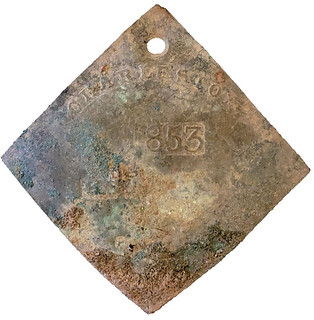 A tag worn by an enslaved person who was hired out by his or her enslaver has been discovered in the remnants of a mid-nineteenth-century kitchen on the campus of the College of Charleston. Such tags, which were issued from the late eighteenth century until 1865, bore registration numbers and identified enslaved people by their trades, such as carpenter, blacksmith, fisherman, or domestic servant. This example, badge number 731, dates to 1853 and is stamped with the word
A tag worn by an enslaved person who was hired out by his or her enslaver has been discovered in the remnants of a mid-nineteenth-century kitchen on the campus of the College of Charleston. Such tags, which were issued from the late eighteenth century until 1865, bore registration numbers and identified enslaved people by their trades, such as carpenter, blacksmith, fisherman, or domestic servant. This example, badge number 731, dates to 1853 and is stamped with the word servant.
While other southern cities had similar hired labor arrangements, Charleston is the only one that produced such tags, says archaeologist R. Grant Gilmore III of the College of Charleston. What is uncommon about this discovery is that this object was found in context, unlike many other examples now in the hands of private collectors that have no provenance,
he says. An enslaved person living in the house may have discarded the tag in the hearth, or someone on loan from across town may have lost it one day.
Property records for the kitchen and those who worked in it may help connect the object with specific enslaved individuals. These objects are emblematic of urban slavery and the way it worked in Charleston,
says Bernard Powers, a College of Charleston historian. You have a designation of an occupation and a connection to an individual that breaks through an amorphous group of enslaved humanity and allows for an identity and a personhood to emerge.
To read the complete articles, see:
Top 10 Discoveries of 2021
(https://www.archaeology.org/issues/451-2201/features/10183-top-10-discoveries-of-2021)
Slave Tag
(https://www.archaeology.org/issues/451-2201/features/10193-south-carolina-slave-tag)
THE BOOK BAZARRE
RMS CARPATHIA MEDAL
Louise Boling published a nice article on the RMS Carpathia medal in the January 8, 2022 issue of MPC Gram, the email newsletter for collectors of Military Payment Certificates and other military numismatica. With permission, we're republishing it here. To subscribe, enter your email address here:
Subscribe to the MPC Gram today!
.
Thank you!
-Editor
On December 29th, the Jeopardy Final Jeopardy clue was In the morning of April 15, 1912 officer Charles Lightoller became the last of about 700 people to board this ship.
Hmm. 1912 – not the Lusitania. That happened in 1915. The Titanic was 1912 – but people were not boarding her, they were desperately trying to get off her. The answer: the RMS Carpathia.
Your inveterately curious reporter, possessed of a handy cell phone, Googled RMS Carpathia, and read the rest of the story.
The RMS Carpathia, a Cunard liner, had left New York City on 11 April 1912, headed to Fiume, Austro-Hungary. On the night of April 14, Harold Cottam, the wireless officer for the Carpathia, off duty but still monitoring the wireless, heard the distress message from the Titanic. He reported the message immediately to the officer of the bridge, who questioned the authenticity of the message. Cottam and the officer of the deck then went to the cabin of the captain, Arthur Rostron, who lost no time in ordering a change of course to respond to the Titanic at all possible speed and ordering a second crew of stokers to the engine room.
Even making full speed, it took the Carpathia about 4 hours to cover the roughly 60 miles, arriving about 1-1/2 hours after the ship's final sinking. The last several miles were through the ice field that had proved fatal to the Titanic. There was no sign of the ship itself, but much debris in the water, as well as the lifeboats. The crew of the Carpathia spent several hours taking aboard the survivors, about 705 people, including the junior wireless operator, Harold Bride, and Second Officer Lightoller. All the resources of the Carpathia were put to making the rescued passengers comfortable. It seemed best for both the passengers and the ship to return to New York City, the original destination of the Titanic. So that was done. The ship, and all aboard, received a hero's welcome.
A Committee of Survivors, chaired by Mrs. Margaret [Molly] Brown, raised money to present medals to each member of the crew, and also a silver loving cup to Captain Rostron, assisted by $5000 from the US Congress. Three hundred twenty [320] medals were created by Dieges & Clust. Senior officers received gold medals [6 of them], junior officers silver, and crew bronze. The obverse of the medal showed the Carpathia, steaming at full speed, on her way to the Titanic. The reverse was inscribed: Presented to the Captain and crew of the R. M. S. Carpathia in recognition of their gallant and heroic services, from the survivors of the S. S. Titanic, April 15, 1912. [See image.] Captain Rostron was also awarded the Congressional Gold Medal in recognition of the Carpathia's service.
At the beginning of World War I, several Cunard liners were taken into the British Navy. The Carpathia was one of them. She was used as a troop carrier, transferring Canadian and American Expeditionary forces to Europe, generally in convoy. On 15 July 1918, she departed Liverpool bound for Boston, carrying a crew of 166, and 57 passengers. The convoy had an escort, but on the 17th, the escort left them, and the convoy split into two sections. The seven-ship element with the Carpathia continued west.
Around 0915 on the 17th, southwest of Great Britain, a torpedo was spotted approaching her. She was struck by 2 torpedoes, fired by the German U-boat 55. One of the torpedoes struck her engine room, killing five men and effectively disabling her. Her radio equipment was also destroyed. Her captain, William Prothero, gave the order to abandon ship. After assuring the destruction of all sensitive material he also left the ship. A third torpedo fired after the ship was abandoned resulted in the sinking of the ship. All on board except the five engine room casualties escaped to the lifeboats, and were subsequently rescued by the sloop HMS Snowdrop, which drove off the U-55. The Carpathia sunk about 120 miles south of Ireland, thus ending the life of a gallant ship.
Addendum:
Given that only 320 of these medals were created, it was interesting that one comes up at auction perhaps yearly. Bonham's, New York City, offered a bronze estimated at £5,900 – 8,900 ($8,000 – 12,000) in April 2012. Cowan's auctions, in Cincinnati, offered a bronze medal at auc?on in June 2016, with an estimated selling price of $4000 - $6000. The E-Sylum (Volume 19, Number 47, November 20, 2016, Article 26) references an article from the Glasgow Times, 15 November 2016, about a medal that was sold at auction in Glasgow for £2000. Aug 2018 at Bourne End Auction Rooms, the 14-carat gold medal that had been presented to the bursar (or purser, both terms are used), E. G. F. Brown, sold with a hammer price of £45,000, which is noted to be a record. Those were all the actual medals, as presented to the crew members, and most have provenance going back to that crew member.
There are also many other replicas available. The Titanic Historical Society commissioned the maker of the original Carpathia Medal to issue this extraordinary piece of Titanic history
; reproduction medals made from an original 1912 Carpathia medal
which are available through their store starting at $135 (bronze). There are at least eight replicas on eBay, starting around $17.
To read the earlier E-Sylum articles, see:
BONHAMS'S TO SELL MEDAL AWARDED TO CARPATHIA CREW FOR TITANIC RESCUE
(https://www.coinbooks.org/esylum_v13n38a22.html)
MORE ON MEDAL AWARDED TO CARPATHIA CREW FOR TITANIC RESCUE
(https://www.coinbooks.org/esylum_v13n39a15.html)
CARPATHIA MEDALS FOR TITANIC RESCUES OFFERED
(https://www.coinbooks.org/esylum_v15n12a16.html)
1912 TIFFANY CARPATHIA MEDAL SOLD
(https://www.coinbooks.org/esylum_v19n47a26.html)
MORE ON THE MEDALLIC ART COMPANY DIES
(https://www.coinbooks.org/v21/esylum_v21n11a07.html)
POYAIS: GREGOR MACGREGOR'S FAKE COUNTRY
Pablo Hoffman passed along this article from The Hustle about a scam that gave rise to some Central American paper money rarities. Thanks! Bizarre story. Here's an excerpt, but see the complete article online. -Editor
On March 20, 1823, after 2 grueling months sailing across the Atlantic Ocean, passengers gathered on the deck of the Kennersley Castle for the first glimpse of their new lives in the country of Poyais.
The view was immaculate: Sun glistening in the shallow waters of a blue lagoon. Mahogany trees drooping over sandy beaches.
James Hastie, who was moving to Poyais with his wife and 2 children, thought the country had a very beautiful appearance from the sea.
Like many passengers, Hastie had signed a contract with the Poyaisian government to work as a laborer. Others, including doctors and lawyers, had cashed in their belongings in Europe for land in Poyais and the opportunity to establish themselves as a new upper crust in the Caribbean.
Rich or poor, it seemed impossible not to prosper. The myriad Poyais advertisements that circulated through Britain had promised fertile land, rivers stocked with fish, and forests teeming with deer.
But as Hastie and the others soon discovered, Poyais was not a country at all. It was one of the most elaborate — and deadliest — frauds in history.
The dot-com bubble of the early 19th century
In 1820s England, no phrase excited investors more than South America.
Britain was swimming in cash and optimism after the end of the Napoleonic Wars. But there was no more war to finance, and the interest rates of the most popular British-backed securities declined, tempting the record numbers of people trying to time the market for maximum profit to find something stronger and riskier.
South America — a catch-all for what is now Latin America — was the inevitable target.
Several countries had gained independence from Spain and were floating bonds to finance their incipient governments. Countries like Colombia and Chile sold bonds totaling ~£100m-£200m in today's money, promising 6% in annual returns by tapping into profits from state-run agriculture and mineral industries.
So began a craze akin to the dot-com bubble: Investors who knew basically nothing about the inner workings of South American countries went on a buying spree, inflating the value of the bonds and creating an intense resale market.
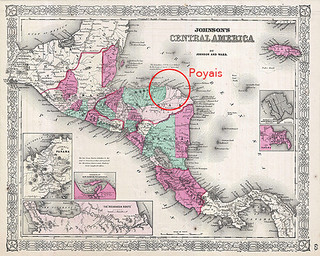 In this speculative environment, MacGregor crafted an insidious plan.
In this speculative environment, MacGregor crafted an insidious plan.
During his South American misadventures, he'd befriended George Frederic August I — the king of the Mosquito Coast Territory (present-day Honduras and Nicaragua) — and had been gifted 8 million acres on the eastern shore of Honduras, an area roughly the size of Maryland.
The land belonged to MacGregor, but it was under the dominion of the British-aligned Mosquito government. Of course, nobody in Europe knew these details.
So back in London, at various society events, MacGregor presented his land as the independent country of Poyais — and cast himself as the ruling Cazique.
In short order, MacGregor set about marketing the territory as a real country:
- He designed a national flag and a coat of arms for Poyais featuring two unicorns.
- He got British papers to detail bond prices for Poyais just as they did for legitimate countries.
- Outside offices in Edinburgh, Glasgow, and London, he and his representatives handed out brochures and sang songs about Poyais.
would rapidly advance in prosperity and civilization.(This ruse perhaps should have been obvious — the pseudonymous author's name was
Thomas Strangeways.)
As 1822 wore on, the excitement spread, and MacGregor steadily increased the price of land from 1 shilling per acre to 4 shillings per acre (£6 to £24 per acre today). In the fall, investors snapped up £200k of bonds (~£24m today) at a 6% rate of return.
They believed they were financing a building boom in a developing country. In reality, the money lined MacGregor's pockets.
The bubble pops
As the victims of his fraud suffered, MacGregor threw ragers in London.
One guest remembered being asked at a party to take an oath to Poyais, only to find it impossible to recite the words in their drunken stupor, from… the wine having passed very freely round.
But MacGregor's celebration was short-lived.
South American bonds faltered in the middle of his Poyais scheme because the countries that sold their bonds spent the proceeds on military conflicts, failing to pay back their debts. Many investors grew skeptical of Poyais by association — even before knowing it was fake — and declined to pay the new installments they owed for their bond purchases.
The Poyais fraud was extraordinary because of the suffering and death it inflicted upon more than 200 would-be settlers. But the financial repercussions were hardly unique.
The South American bond bubble popped, contributing to the Financial Panic of 1825. By 1827, nearly every Central and South American bond issue had gone into default. In the aftermath of the panic, 52 English banks failed.
Knowing more trouble lay ahead as his victims returned, MacGregor fled to France. He escaped prosecution for his fraud and tried selling land in Poyais twice more before retiring to Venezuela.
To read the complete article, see:
The con artist who sold rich investors a fake country
(https://thehustle.co/the-con-artist-who-sold-rich-investors-a-fake-country/)
PENNY PILE PRECIPITATES PROSECUTION
Leon Saryan sent in this update to last March's story about a Georgia company's pile of revenge pennies. -Editor
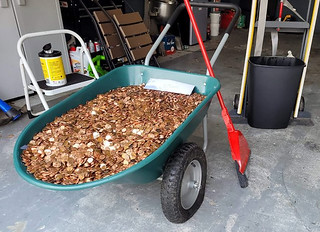 When Andreas Flaten didn't receive his final paycheck from a former employer last January, he complained about it, calling up the US Department of Labor to lodge an accusation of wage theft. That employer responded by leaving more than 91,000 pennies on his driveway in Fayetteville, Georgia.
When Andreas Flaten didn't receive his final paycheck from a former employer last January, he complained about it, calling up the US Department of Labor to lodge an accusation of wage theft. That employer responded by leaving more than 91,000 pennies on his driveway in Fayetteville, Georgia.
Now the US government is suing that company, arguing the act constituted illegal retaliation.
In a complaint filed with a federal court in Georgia, the Department of Labor accuses A OK Walker Autoworks and its owner, Miles Walker, of more than just pettiness.
The lawsuit claims the auto-repair shop bilked its workers out of money they were owed. The lawsuit accuses the company of "repeatedly and willfully" failing to pay time and a half for overtime, instead relying on a flat rate of pay regardless of whether someone worked more than 40 hours in a week.
The March 2021 penny stunt — along with the complaint that preceded it — appears to have prompted investigators to take a closer look at the shop's books.
"I honestly didn't think anything would be done," Flaten, 27, said in a phone interview with Insider. He didn't expect much when he first argued his wages had been stolen. What's happened since has restored some of his faith in government, and he thinks it should be a lesson to other workers who find themselves in a similar position.
"They definitely should not be scared to reach out," he said. "Speak up. Don't be quiet about it. Because if you're quiet about it, it's just going to continue to happen to you and everybody else."
Thanks also to Len Augsburger who forwarded a New York Times article. -Editor
To read the complete articles, see:
US government sues Georgia auto-repair shop that dumped more than 91,000 pennies in a former employee's driveway
(https://www.yahoo.com/news/us-government-sues-georgia-auto-011404331.html)
U.S. Sues Shop Owner Who Dumped 91,500 Pennies on Ex-Worker's Driveway
(https://www.nytimes.com/2022/01/09/us/georgia-auto-shop-pennies-lawsuit.html)
To read the earlier E-Sylum article, see:
THE 500-POUND POMADED PENNY PILE
(https://www.coinbooks.org/v24/esylum_v24n13a35.html)
LOOSE CHANGE: JANUARY 9, 2022
Here are some additional items in the media this week that may be of interest. -Editor
In the you-just-can't-make-this-stuff-up department, a Mayor in the Philippines fires money at voters with gun. -Editor
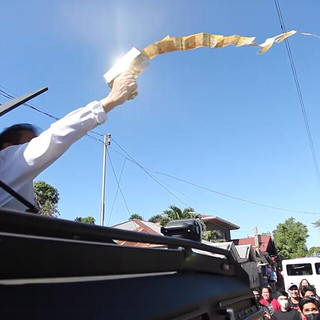 The mayor of the city of Narvacan with a population of less than 50,000 in the Philippines, businessman Luis
The mayor of the city of Narvacan with a population of less than 50,000 in the Philippines, businessman Luis Chavit
Singson, became the object of criticism by Filipino Internet users after publishing a video in which he distributes money to his voters with the help of a golden gun made especially for this purpose.
A 43-second video published on Facebook, in which Singson shoots banknotes in denominations of 100 and 500 pesos (PLN 8-40) with a pistol, has been viewed nearly 3 million times. You can see the politician walking among the people, raising his hand and pressing the trigger of the gun, and money is pouring out of it. In other fragments of the video Singson throws banknotes in the same way from a stationary car, and people shove through trying to grab them.
Many Internet users praised the politician for his generosity in the comments, but there were also those who accused him of humiliating voters. I have the impression that he was making fun of poor people. Why didn't he put the money in the envelopes and hand them out one by one?
One of the users of the social platform asked.
To read the complete article, see:
Philippines. Mayor criticized for shooting gold-gun banknotes at voters
(https://sparkchronicles.com/philippines-mayor-criticized-for-shooting-gold-gun-banknotes-at-voters/)
Scott Semans passed along this commentary on coin collecting in the context of inflation. Thanks. -Editor
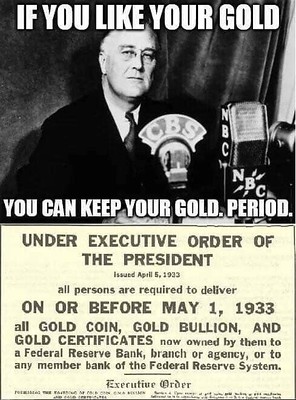 The history of America's coins also vivified the nation's shifting political values. In the era of this nation's birth, currency was often recognized as a character issue — specifically, the contemptible character of politicians. Shortly before the 1787 Constitutional Convention, George Washington warned that unsecured paper money would
The history of America's coins also vivified the nation's shifting political values. In the era of this nation's birth, currency was often recognized as a character issue — specifically, the contemptible character of politicians. Shortly before the 1787 Constitutional Convention, George Washington warned that unsecured paper money would ruin commerce, oppress the honest, and open the door to every species of fraud and injustice.
The Coinage Act of 1792 established gold and silver as the foundation for the nation's currency and authorized a death penalty for anyone who debased the nation's gold or silver coins.
But as time passed, Americans forgot the peril of letting politicians ravage their currency. In 1933, the United States had the largest gold reserves of any nation in the world, but fear of devaluation spurred a panic, which President Franklin Roosevelt invoked to justify confiscating Americans' privately owned gold. Roosevelt denounced anyone who refused to turn in their gold as a hoarder
who faced 10 years in prison and a $250,000 fine. Roosevelt's penalty was not as harsh the Soviet Union's death penalty for anyone caught hoarding
wheat from a collective farm. Roosevelt said he needed freedom of action
— which he used to slash the value of the dollar from 1/20th of an ounce of gold to 1/35th of an ounce of gold.
I began collecting coins in 1965, the year President Lyndon Johnson began eliminating the silver in new dimes and quarters. At that point, the value of the dollar was falling due to federal deficit spending. The government printed new money to pay its debts, resulting in inflation. Rather than curtailing spending, Johnson debased the currency. He swore there would be no profit in hoarding
earlier coins for the value of their silver content.
(Silver coins subsequently increased in value 15-fold.) Johnson portrayed his debasement as progressivism at its best: We are going to keep our eyes on the stars and our feet on the ground.
He preferred people to look skyward rather than focus on the skulduggery in Washington.
To read the complete article, see:
My Two-Bit Political Awakening
(https://jimbovard.com/blog/2022/01/05/my-two-bit-political-awakening/)
For those of us (OK, everybody) who spends time reading online, here's a great essay by Kate Harding on how to read critically. -Editor
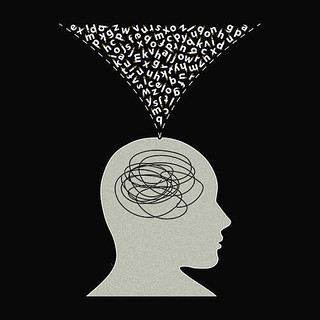 Since the internet has made the entire world a library with no exits or supervisors, many readers treat every published piece of writing as a conversation opener, demanding a bespoke response.
Since the internet has made the entire world a library with no exits or supervisors, many readers treat every published piece of writing as a conversation opener, demanding a bespoke response.
Not every piece of short nonfiction writing is an opinion piece, crafted to advance a particular argument. This is the first thing we all need to understand. What you're reading now, for instance, is an essay—not an op-ed, a chapter, or a blog post.
They tweet these things, they email them, they reply in comments, they blog about them and snitch-tag the author. There is no apparent awareness that, in writing a piece and publishing it, the author has said what they meant to say and turned the project of thinking about it over to the reader. Today's reader will simply not accept the baton being passed. If something is unclear, the author must expand; if something offends, the author must account and atone. Simple disagreement triggers some cousin of cognitive dissonance, where the reader's brain scrambles to forcibly reconcile beliefs that don't actually contradict each other.
I am an old woman yelling at a cloud. I know this.
To read the complete article, see:
Have We Forgotten How to Read Critically?
(https://www.damemagazine.com/2022/01/07/have-we-forgotten-how-to-read-critically/)
Arthur Shippee passed along this article about the fabled cache of Civil War gold in Pennsylvania. Thanks. -Editor
Treasure hunters who believe they found a huge cache of fabled Civil War-era gold in Pennsylvania are now on the prowl for something as elusive as the buried booty itself: government records of the FBI's excavation.
Finders Keepers filed a federal lawsuit against the Justice Department over its failure to produce documents on the FBI's search for the legendary gold, which took place nearly four years ago at a remote woodland site in northwestern Pennsylvania.
The FBI has since dragged its feet on the treasure hunters' Freedom of Information Act request for records, their lawyer said Wednesday.
To read the complete article, see:
Treasure hunters sue for records on FBI's Civil War gold dig
(https://apnews.com/article/technology-oddities-pennsylvania-lawsuits-2ed5379dc0391c970d6d39f6e994fd70)
FEATURED WEB SITE: INTERNATIONAL TOKEN WEB CONFERENCE
This week's Featured Web Site is the International Token Web Conference

